StarTribune
Bwca trip tips: readers offer their best to first-timers.
I've paddled wild rivers in Alaska and northern Canada, hiked mountain ranges from the Beartooths to the Cascades and explored scenic wonders ranging from Yellowstone's mudpots to Costa Rica's mangrove forests.
All are spectacular.
But every year — as I have done for 40 years — I head north to Minnesota's beloved Boundary Waters Canoe Area Wilderness. Because in terms of sheer beauty, solitude and accessibility — not to mention often-spectacular fishing — our own wilderness waterway is unparalleled.
While most BWCA visitors are experienced, every year first-timers travel there — some prepared, many others not so much. Newcomers sometimes are conspicuous by the armfuls of gear, often stuffed in black plastic garbage bags, they lug across portages. Or by their bluejeans — slow-drying cotton scorned by most Boundary Waters paddlers.
There are easier, better ways. Exploring the BWCA wilderness should be a wondrous experience, not a pain. And it is, with the proper gear, clothing and know-how.
We're not endorsing them all. Some are, well, unusual. Take the suggestions that interest you (edited for length and content) and vet them yourself. But even seasoned BWCA trekkers should find some of the tips thought-provoking.

This ain't a resort
Go light. Leave the tables, chairs and coolers at home. Go with freeze-dried food (it's gotten a lot better; Mountain House is a good brand), one change of clothes is plenty, and rent a Kevlar canoe if you don't have one. If you can't do a portage in a single trip, you probably have too much stuff. Don't skimp on the bug spray though. Last June on the Nina Moose River, the mosquitoes were epic.
Nathan Vik, Maplewood
Pick up that birch bark.
Besides taking 15 or more trips with experienced groups, I have led 10 or more neophyte groups to the BWCA and always recommend the following:
• Don't try to carry everything across the portage in one carry. The walking is as much of the experience as the paddling and should be enjoyed. Two carries also allows bringing some "luxury" items.
• Decide ahead of time who is going to carry what on portages and stick to it unless there is common agreement to change. This prevents things being left behind.
• On the first day everyone should pick up a dry piece of birch bark and keep it in a pocket. There are few better fire starters.
• Each one should have their own toilet paper, plus a little extra. Rather than one large roll, have several smaller ones stashed in various places, each in a plastic bag.
• Cross the portage carrying the lightest load first. Enjoy the walk, look at the scenery, and make note of difficult portions of the trail that will have to be dealt with under the heavy load.
• If it is lunch time on the portage, look for a lunch spot off the trail. Avoid lunching at the landings and becoming a nuisance to other visitors.
• Bring a golf umbrella. It is more readily available than your rain jacket and pants. An umbrella and rain pants are far more comfortable, and just as effective as a rain coat around camp, at the latrine or crossing a portage during a passing shower.
• Boxed wine is good. Leave the box behind and bring only the bladder. When the wine is gone, the bladder is a good water flask.
Phil Behrend, Minneapolis
Sense of humor a must.
Welcome to one of the most unique, beautiful places on Earth.
Every spring our group gets together to plan our trip. Talk about what kind of trip you want, traveling from lake to lake or base camping with day trips. Talk about your route, get maps and get familiar with them. Talk about equipment, food, clothing and any little things you may want to bring. Talk about all the fun you will have.
Safety first! Wear your PFDs, put on sunscreen, and pay attention to the skies and winds. Pack your rain jacket on the top of your Duluth pack. Be prepared for all kinds of weather. You can still have fun if it rains.
Bring your sense of humor and sense of adventure. Be respectful of this precious wilderness area. Take care of it.
Katie Maiers, Minneapolis
Early, early, early.
Here are a few tips for the first-timers:
• Do NOT overpack anything — food, clothing, unnecessary items. Think about every ounce you're going to carry.
• Make camp early. Which means get on the water early; early morning is gorgeous in the BW. Be off the water by early afternoon.
• Bring a tarp. In wind, rain and hail, it will be worth the weight.
• Wear hiking boots on the portages. I've seen people in flip-flops. They have to be rookies. You're a long way from help if you gash open a foot, sprain an ankle, etc.
Tom Pecharich, Rogers
You've been warned.
The lakes and streams on the Canadian Shield are beautiful but carry risks. The rocks are especially beautiful and dangerous along the shoreline. The black ones and especially wet black rocks are very slippery, like grease. Consider you've been warned.
Jim Goudy, Austin
Books, bugs and brushing.
Here are a few tips that I recommend for any BWCA camper.
• Don't forget your toothbrush!
• For God's sake, bring a head net to keep bugs away.
• You aren't going to read that novel; leave it at home.
• 100 feet of parachute cord makes life easier in ways you haven't thought of yet (but will when you need it).
• Even if you have waterproof bags, wrap everything you've packed in a 10-x-10 tarp. It can serve you in a million ways.
• Don't rush. The wilderness doesn't care how many trips you make per portage.
• Learn how to paddle and carry a canoe on sunny days BEFORE you go. The grading curve gets steeper when it's pouring buckets of rain, you're sliding around in the mud, and you are being eaten alive by mosquitoes.
• Leave no trace! Pack out every single piece of trash you bring in. Nothing brings you back to the "real world" you are escaping than a piece of trash on the trail.
Brian Carrier, Buffalo
Experienced paddler.
Go with someone who knows what they are doing and has been there many times before. It is the fastest possible way to get a leg up on traveling by canoe, and will allow you to quickly gain skills and tricks that are otherwise earned "the hard way." This really can mean the difference between a lovely vacation, and an "I'm never doing this again" moment.
Jon Brelie, Minneapolis
Layover day required.
As a 12-time veteran of the BWCA, I have a few tips:
Take a layover day. The whole reason you have ventured so far north was to relax and enjoy nature, so do it.
Call an audible. Every trip can be planned down to the exact minute, but what happens when the campsite you picked is taken or the portage is flooded? Most of my favorite memories are from unplanned hiatuses that are more enjoyable than the original plan.
Bring an extra paddle and life jacket. I have been on 12 different summer trips and have had five broken paddles.
Get the right maps. Follow the rules. As an avid outdoorsman I love the wilderness but have more friends every time who want to come or cheat the rules. No cans makes your packs lighter, small groups make it more enjoyable. I've seen eight moose because we stay with our small group and stay quiet.
Tony Johnson,
Planning is essential.
• Identify your possible group members and the group leader. Plan a "reasonable" route — for first-timers, 5 to 7 miles a day, depending on the age and physical abilities of the group.
• Get your entry permit as early as possible.
• Plan a group packing list (I have a working Excel sheet of the "group gear" list I edit every year to add/remove things as a good starting template).
• The group leader should estimate expenses and tell each member what their estimated individual contribution will be. The group leader should collect a financial commitment from the other members. It's easy for a potential group member to back out of the trip if they have no financial commitment.
• Have a meeting where there is a "group inventory" of gear.
• Plan out each meal and how much snack food the group will have throughout the trip. Also, allocate a small amount of food in excess as an emergency.
• Pack in advance! Weigh your packs, see how everything fits, and test carrying the packs as if on a portage.
Jeremy Singleton, Savage
Feet in the water.
Pack shoes or sandals that can dry out quickly or that you're not worried about getting wet! It really helps to guide your canoe into portages or camp sites by getting out of the canoe while in shallow water.
David Sandager, St. Paul
Bears and scotch.
The rocks can be treacherous — always know where your feet are when you're portaging or just walking around your camp site. Paddle the lightest canoe possible, but avoid noisy aluminum — portaging a heavy canoe is no fun. Re: your food packs, don't worry about bears too much, but be mindful of squirrels. They can chew through cloth and plastic in a hurry. I've never worried about getting my drinking water from the lakes except when near a beaver dam, where giardia is a risk factor. The most important tip: Enjoy! It's a rare privilege to be able to paddle in such a magical place.
Mike Kluznik, Mendota Heights
Don't count on eating fish.
My sister and I will take our 22nd BWCA trip this June. Our tips include:
• Go with a veteran the first time. Watch, listen and learn.
• Decide why you are going. Is it for fishing? Enjoying the silence? Photography? Plan your trip accordingly.
• Don't think you're going to eat fish every meal. Between weather, wind and mayflies, they may not be biting.
• Be OK with, and prepared for, rain, bugs, wind and bugs (did we say bugs?!?)
• Leave the books and electronics at home. Just be in nature and watch. You'll see amazing things.
Nancy Rosman, Forest Lake
Virginia spiegel, byron, ill., dry your own food.
Always bring a stocking hat and gloves. Learned the hard way two years ago when I woke up to frost on my tent — on Aug. 2. Make and pack your own dried meals. They are less expensive and taste so much better than what's available to buy. Almost any recipe can be dried with a few, simple tweaks.
Stephanie Dowell, Buhl
Bourbon and sausage.
Our essentials:
Gear: rain pants and jacket; good sturdy boots with ankle support; wool socks (wet, soggy feet, no problem!); wool sweater.
Calories: summer sausage (for snack or fried for breakfast); waxed cheese (keeps surprisingly well and the fat/protein combo is awesome); nuts and more nuts.
Drink: The portable UV wand is so much better than pumping a water filter; advise one wand per person, takes about one minute to purify a bottle of lake water. Bourbon! Nothing like it to warm you up after a windy, rainy, cold day. Starbucks has a great instant coffee.
Austin and Rachel Damiani, Minneapolis
An outfitter makes it easy.
Use an outfitter, especially if you are not equipped to camp or experienced to camp or only enter the BWCA rarely. Your trip will be much less stressful and more enjoyable when the outfitter takes care of everything. This was how I went the first time with my 12-year-old son and how I'd go again.
the rev. Mike VerWay, Inver Grove Heights
Respect your setting.
My suggestions as an avid canoeist:
Respect. It should go without saying that one should respect the BWCA, after all, it is one of the last true wildernesses in the Lower 48.
Have a plan. Be sure that family members or friends know an approximate route of what lakes, portages and other detours you may take. Pack out what you pack in.
Etiquette. If you come to a portage where a group is unloading their things back into the water, give them the courtesy of finishing up their launch, especially if it's a crowded landing area.
Enjoy yourself. Take a breath. Oftentimes we can get caught up in the moment of a difficult portage or an impossibly hard paddle. But take heart knowing that you are exploring a wilderness that very few get to traverse. Take solace knowing that you are surrounded by the sublime.
Anthony Skubic, Tower, Minn.
Wolves stun Nuggets in Game 7 with comeback for the ages
- 'We'll see you at your house': How fear and menace are transforming politics
- Ten clutch points from the Wolves' Game 7 victory
- Minnesota Legislature's 2024 session ends in anger and acrimony

Read the Game 7 recap: Wolves come back to KO defending champions

With Barkley howling, TNT crew unanimously picks Wolves to win West
Sports on tv and radio.

Ten clutch points from the Wolves' Game 7 victory
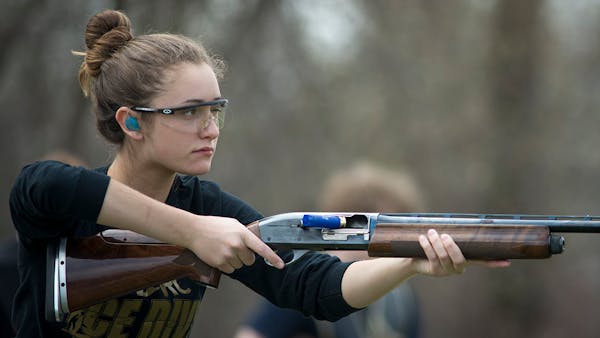
- Cabin Country: My blueprint for my Wisconsin cabin Apr. 24, 2015
- Minnesota Driftless Hiking Trail gets boost with a nearly half-million-dollar state grant • Outdoors
- What's up with that e-bike rebate? Shop owner creates calculator for answers • Outdoors
- Find a spring hike that fits: Here are seven good ones around the state • Outdoors
- Superior National Forest crews continue to gain on wildfire, officials say • Outdoors
- Anderson: Before saunas got cool, Ely Steam Sauna was already hot • Outdoors
© 2024 StarTribune. All rights reserved.

How to Plan An Amazing Boundary Waters Trip in 6 Easy Steps

Last Updated: 4/12/23
The Ultimate Boundary Waters Trip Planning Guide
Boundary Waters trip planning doesn’t have to be daunting.
If you’re wondering how to plan your first-ever visit to the Boundary Waters Canoe Area Wilderness in northeastern Minnesota , I’m here to help. As a Boundary Waters outfitter on the Gunflint Trail , I’ve been helping people create unforgettable Boundary Waters trips for nearly two decades.
If you’re planning a Boundary Waters canoe trip but don’t know how to begin, read on. In this guide, I’ll do a deep dive into all your Boundary Waters trip planning questions. This guide breaks down Boundary Waters trip planning into five easy steps.
My insider advice will help you create a great first BWCA canoe trip. Just don’t be surprised if you end up falling in love; this region of the United States has captivated outdoor adventurers for centuries.
This post contains affiliate links. When you purchase something through these links, I receive a small commission that helps me create this blog’s content. There’s no extra cost to you.
Gotta run? Pin for future reference for Boundary Waters trip planning!

Ultimate Boundary Waters Trip Planning Guide Table of Contents
An Introduction to the Boundary Waters
- What Is the Boundary Waters Canoe Area Wilderness?
- Where Is The Boundary Waters Canoe Area Wilderness
- How the Boundary Waters Differs From A National Park
- When’s The Best Time to Go on a Boundary Waters trip?
- How the Boundary Waters Canoe Area Wilderness Permit System Works
- Why Should You Go on a Boundary Waters trip?
- Is A Boundary Waters Trip Right For You?
6 Steps of Boundary Waters Trip Planning
1) Select a date for your trip 2) Research your BWCAW entry point and plan your trip route 3) Book your permit 4) Organize your camping gear 5) Plan your camping menu 6) Mentally prepare for your Boundary Waters Trip
Helpful Boundary Waters Trip Planning Information
Best boundary waters trip planning resources, boundary waters trip planning mistakes to avoid.
- My Best Boundary Waters Trip Tips
An Introduction to the Boundary Waters Canoe Area Wilderness
What is the boundary waters.
The Boundary Waters Canoe Area Wilderness is a million-acre tract of public land stretching along northeastern Minnesota’s Canadian border. Nearly 1200 lakes populate the Boundary Waters. Portage trails connect these lakes into navigable canoe camping routes.
To move around the Boundary Waters, you load all your gear into a canoe, paddle across a lake or down a creek to a portage. At the portage, you pick up all your gear and canoe and carry it to the next lake. Rinse and repeat until you find a campsite (all equipped with a fire grate and latrine) that suits your group for the night.
You’ll often see people referring to the Boundary Waters as the BWCA, although the correct abbreviation is BWCAW. That “W,” signifying “wilderness,” is an important piece of the Boundary Waters’ identity.
Internationally acclaimed for its natural beauty, the Boundary Waters attracts anglers, canoeists, and those seeking a peaceful wilderness camping retreat. This tract of lakes and forest is a Minnesota must-see, but it’s not without unique challenges for even experienced outdoor adventure travelers.
Where is the Boundary Waters Canoe Area Wilderness?
The Boundary Waters Canoe Area Wilderness is located inside the Superior National Forest .
The Boundary Waters has three separate units:
- 1) The Vento Unit accessed from the east side of the Gunflint Trail and the end of the Arrowhead Trail in Hovland
- 2) The largest “main” section of the Boundary Waters that stretches from Gunflint Lake all the way to Ely and Crane Lake
- 3) The La Croix unit in between Burntside and Vermillion Lakes
In general, people access the Boundary Waters either from the east side via Lake Superior’s North Shore and Grand Marais or the west side via Ely and Echo Trail.
Drivetimes to Boundary Waters west side (Ely/Echo Trail)
Duluth to Boundary Waters west side: 2 hours Twin Cities to Boundary Waters west side: 4 hours Chicago to Boundary Waters west side: 9 hours
Drivetimes to Boundary Waters east side (Grand Marais/Gunflint Trail)
Duluth to Boundary Waters east side: 3 hours Twin Cities to Boundary Waters east side: 5 hours Chicago to Boundary Waters east side: 11 hours

The Boundary Waters are NOT a national park
Managed by the U.S. Forest Service , I think many people expect the Boundary Waters to be a slightly wilder national park. But this is no White Sands ; it’s a wilderness!
While the Forest Service maintains portages and campsites to keep them useable, they also let nature run its course. If a beaver dam floods a portage, you might get wet feet (and shins). Expect narrow, rock strewn portage trails sometimes impeded by down trees or thick brush. And yes, if a wildfire ignites somewhere in the BWCAW, you might have to adjust your route.
Beyond the iconic “Boundary Waters Canoe Area Wilderness” signs at the border to the wilderness area, there are no signs in the BWCAW. Boundary Waters visitors depend on their own navigation skills. With no cell service or a speedy way for first responders to reach distressed campers, BWCAW visitors should expect to get themselves out of any emergencies.

When’s The Best Time To Go on A Boundary Waters Trip?
While the Boundary Waters are open year-round, canoe trip season runs from when lakes start opening up in early to mid-May through mid October. Overnight camping permits are required from May 1 – September 30.
If you want to fish lake trout, go immediately after ice out or as late in September as possible. To avoid crowds, skip Boundary Waters high season in late July through late August. Wild berry season, the best summer weather, and ideal swimming temperature correlate with BWCAW high season.
Other considerations for when to take your Boundary Waters canoe trip: bugs like mosquitoes and black flies peak in June. Fall in the Boundary Waters is beautiful. Many people like the quietness of September trips, but days are short and temperatures can be chilly.
Like all things Boundary Waters related, you can have a fantastic trip no matter when you visit, but a little research ahead of time will let you know what to expect.

How The Boundary Waters Canoe Area Wilderness Permit System Works
To regulate usage, the U.S. Forest Service requires a permit for anyone camping overnight in the Boundary Waters between May 1 – September 30. (If you’re doing a Boundary Waters day trip , you still need a permit but they are free and self-issued.)
During the summer season, the Forest Service sets a number ( quota ) of how many overnight groups can enter the wilderness through each specific entry point each day. This helps eliminate overcrowding in especially popular Boundary Waters locations. It should also ensure that your group finds an open campsite within a normal day’s travel.
This quota system is critical to maintaining a wilderness feeling in Boundary Waters, but it’s also a little confusing.
Important Points About Boundary Waters Permits
- You only need one permit for your entire group (limited to nine people and four watercraft) for your entire trip.
- Your permit allows you to enter the BWCAW at a specific entry point on a specific day . As long as you enter the Boundary Waters on that day at that point, you can stay in the Boundary Waters as long as you want. (Technically you need to switch campsites every 14 days, but yes, some people have stayed for an entire year!)
- It’s worth reiterating that while a permit should mean there’s an open campsite group fairly close to the entry point, it in no way guarantees a campsite on the first lake you reach.
Why You Should Definitely Go on a Boundary Waters Trip
Many people come to experience great fishing for walleye, bass, pike, trout. Other Boundary Waters visitors want to see wildlife in their natural habitat. For most, disconnecting from technology and stripping life down to the bare essentials is the real draw. In 2023, the wilderness area was awarded “Quiet Park” status by Quiet Parks International.
In late July and early August, the Boundary Waters offer unparalleled wild berry picking and swimming. No matter why you choose to visit the Boundary Waters, you’ll be treated to unreal stargazing as well as beautiful sunrises and sunsets. In fact, in 2020, the International Dark Sky Association designated the Boundary Waters as the world’s largest dark sky sanctuary.
But beyond the region’s scenic, solitary appeal, Boundary Waters trips are often very personally rewarding. There’s no denying that BWCA canoe trips can be challenging . Many people walk away with increased self-confidence and the rewarding sense of “hey, I didn’t know I could do that!” Additionally, Boundary Waters trips can lead to meaningful connections with family and friends and memories you’ll never forget.
If you’re ready to get planning a BWCA adventure of your own, here are my 6 easy steps to plan an amazing Boundary Waters trip.
Is A Boundary Waters Trip Is Right For You?
But first, before committing to a BWCA canoe trip, carefully consider your answers to these five questions:
- Do you like being outdoors?
- Are you comfortable on self-guided adventure and do you trust yourself or someone else in your group with navigation?
- Do you like the idea of going off the grid?
- Do you have stamina and can you tolerate moderate physical discomfort?
- Are you okay with things not going to plan?
If you answered in the affirmative, a Boundary Waters trip might be right up your alley. Let’s get planning!

6 Easy Steps To Plan Your Next Boundary Waters Trip
1) select a date for your boundary waters canoe trip.
The date you start your Boundary Waters will have a profound impact on the nature of your canoe trip.
Since there’s nothing negotiable about the BWCAW overnight camping permit system. If you have a specific Boundary Waters route you want to do, you might need to be flexible with your starting date to accommodate permit availability. If you must start your trip on a specific date, you might not get your first choice of entry point. Should your schedule change and you need to start your trip on a different day, you must cancel your first permit and book a new permit for your new start date.
Remember, you aren’t booking a period of time in the Boundary Waters, you’re booking the right to enter the Boundary Waters at a certain point on a certain day. There is no such thing as entering the Boundary Waters a day earlier or later than what’s printed on your permit. If you don’t enter the Boundary Waters at the date and point on your permit, your permit is null and void.
Before you spend too much time gnashing your teeth over which Boundary Waters route you want to do, check the available Boundary Waters overnight paddle permits on recreation.gov to see which entry points and subsequent routes are available for your starting date.

2) Research Your BWCAW Route
Set aside a couple evenings to research the Boundary Waters before selecting your route.
(If you’re planning your Boundary Waters trip before permits become available in late January, you can do steps 1 and 2 simultaneously.)
With dozens of BWCA entry points to choose from it’s easy to feel overwhelmed. I highly recommend Robert Beymer’s Boundary Water Canoe Area guidebooks for a user-friendly introduction to the Boundary Waters. He discusses each entry point in detail and provides route suggestions for each entry point. It’s a great one-stop shopping resource to guide you to a route that’s the right length and difficulty for your group.
You can also find this information poking through bwca.com’s trip report archives or on the Boundary Waters reddit.
If you don’t like research (um, I’m not sure we can be friends . . .) your best bet for finding a route is to pick up the horn and call a Boundary Waters outfitters . These businesses on the edge of the BWCAW cater to the needs of Boundary Waters visitors with canoe and gear rental, shower facilities, bunkhouse accommodations, and yes, trip advice. Most outfitters’ websites list several canoe route suggestions and they’re happy to talk you through those routes. Often 15 minutes on the phone with an outfitter can save you two weeks of increasingly confusing (and conflicting) internet research.
How do you select a BWCA canoe route?
You need to answer one major question when selecting a Boundary Waters canoe route: what do you want to do on your trip ?
Specifically . . .
- Do you want to base camp a couple lakes in from your entry point?
- Is fishing important?
- Do you want to avoid portaging at all costs?
- How do you feel about big water (aka, large lakes)?
- Do you want to move every day?
The answers to these questions naturally narrow down route possibilities for your group. It’s important to prioritize because it’s rare, if not basically impossible, for a Boundary Waters route to perfectly align with all of your trip desires.
If you don’t want to portage, you’ll spend your Boundary Waters trip on a large, busy lake. If you don’t want to see many people, you’ll need to put a few difficult portages between you and the entry point. Beautiful scenery might come at the expense of great fishing. It’s all a give and take, so take the time to determine your Boundary Waters route dealbreakers before committing to an entry point.

3) Reserve Your Boundary Waters Permit
Permits for the upcoming season become reservable on the last Wednesday of January. That’s the first day you can reserve permits, but as long as there’s permit availability, you could buy a permit the very day you want to start your trip.
In recent years, the Boundary Waters have seen a surge in popularity. If you want a popular entry point during high season (late July – mid August) book your permit as soon as you can.
To book a permit, pop over to Recreation.gov . If you don’t have one already, you’ll need to set up an account. If you’re using a Boundary Waters outfitters for your trip, they can reserve the permit for you, but they will still need to set up a recreation.gov account specifically for you using your email address.
Avoid these Boundary Waters permit booking mistakes
If your group size is larger than one, be sure to list at least one alternate leader other than yourself. In the event that you’re unable to go on the trip, this allows the permit to be transferred to that alternate leader without having to cancel and book a new permit.
The exit date you put on your permit isn’t written in stone and has nothing to do with your permit validity. The Forest Service mostly wants this info for statistical reasons. Remember, you’re not reserving a “____” night trip in the Boundary Waters – you’re booking an entry permit.
You can adjust the amount of people on your permit up until the moment your permit is actually issued to you at a U.S. Forest Service office or a Boundary Waters cooperator station, like an outfitters.

4) Organize Your Camping Gear
If you backpack or car camp, you’re probably well on your way with owning the gear you need for a Boundary Waters canoe trip. Consult my Ultimate Boundary Waters Packing List if you’re not sure! A couple months out from your trip, use my packing list to determine any items you need to rent or borrow.
You won’t get very far on your canoe trip without a canoe . Really a canoe, some paddles, and lifejackets are the only specialized pieces of equipment you need for a Boundary Waters trip. Happily, more often than not, there’s a Boundary Waters outfitters no farther than ten miles from your entry point that can rent you a canoe for $35-60 a day depending on the type and model you select.
Portage packs vs. backpacks and why you need to use them for Boundary Waters trips
Another commonly rented piece of Boundary Waters specific equipment are portage packs. Often referred to as Duluth packs, these large bags hold all your equipment, personal items, and food as you travel over portages. They also fit well in canoes.
If you already own backpacking packs, those will work, although they won’t hold as much gear and depending on their size can’t always lie flat on the canoe bottom. If you want to purchase some portage packs before your trip, Cooke Custom Sewing makes our favorites. And remember, whatever style pack you use, you will need a heavy duty plastic liner (like a construction trash bag) for the pack to keep your gear dry.
When should I reserve gear for a Boundary Waters trips?
If you need a canoe, reserve one with an outfitter at least six weeks before your trip’s start date. For complete outfitting (where the outfitter provides everything -canoe, gear, food – except personal items like clothing and toiletries), reserve at least two months out.
Just need a tent or portage pack? A couple days’ heads up is usually plenty of notice.

5) Plan Your Camping Menu
Meal planning for a Boundary Waters canoe trip is a big task and really warrants its own post at a later date. (Stay tuned!)
To avoid packing way too much food, try delegating one person in your group to tackle this task. If you have anyone in your group with dietary restrictions, nominate them! For best results, start thinking about your Boundary Waters trip menu about a month out so you can order any specialized dehydrated food or have enough time to do your own dehydrating if that’s how you roll.
If you’ve gone on overnight backpacking trips, you’re probably already familiar with brands like Backpacker’s Pantry, Mountain House, or Good To-Go for lightweight, dehydrated entrees.
One beautiful thing about Boundary Waters trips is that you don’t have to solely depend on these pre-packaged meals. Because you only need to carry your food over portages, most Boundary Waters canoe trippers pack more fresh food (fruit, steaks for the first night dinner, breads like bagels) than you normally would on a backpacking trip.

6) Mentally prepare for your Boundary Waters trip
Attitude is EVERYTHING for a successful Boundary Waters canoe trip. I can’t overemphasize how important it is to go into a wilderness trip setting with an open mind and can-do attitude.
This might sound a little corny, but we see people struggle the most with their canoe trip when they fall into one of two camps. On one side we haven’t those who didn’t do any research about their trip and find it far more challenging than they expected. On the opposite end are those who researched their trip to the point that the trip can’t possibly live up to their expectations.
One technique for mentally preparing yourself for a great Boundary Waters trip is to have an answer to the question: “What will we do if it rains every day?” The people who have the most amazing Boundary Waters trip year after year are adaptable and go with the flow. No matter how diligently you research and prepare, things can still not go according to plan.
Boundary Waters Canoe Area: Western Region by Robert Beymer Boundary Waters Canoe Area: Eastern Region by Robert Beymer Message boards on bwca.com (especially trip reports ) Boundary Waters reddit Tumblehome: A Boundary Waters Podcast WTIP’s Boundary Waters Podcast Paddle Planner

Research fishing options before you pull your Boundary Waters permit
If you want to fish for a specific species of fish, please for the love of all things holy , make sure those fish actually live in the lakes on your route. Contrary to popular belief, walleyes aren’t native to northeastern Minnesota and many Boundary Waters lakes don’t have a single walleye in them. Save yourself a little heartache and plug lake names in the DNR’s Lake Finder before you book.
Don’t wait to book your permit A common scenario we see is that someone wants to book a Boundary Waters trip, but they’re not sure what dates will work for everyone interested in the trip. But with the Boundary Waters’ recent surge in popularity, we’re seeing many entry points’ permits fill up by late winter.
Your best bet is to just book a permit for the date that works for you personally. If you wait for everyone to agree, you might miss out on a permit all together. And here’s a little secret: if people really want to go on the trip, they’ll figure out a way to make it work.
Don’t hoard permits
If you’re dealing with indecisive group members, it’s temping to book several permits for different dates with the plan to just cancel the ones you end up not needing. The U.S. Forest Service is pretty hip to this trick. In fact, they reserve the right to cancel permits with overlapping dates. They will reach out if they suspect shenanigans.
And honestly, karma’s a witch, y’all. How would you feel if you couldn’t get a Boundary Waters permit because someone had booked seven permits but only ever planned to use one of them? Since it takes most people months to plan their canoe trip, canceling your Boundary Waters permit two weeks before the trip’s start date is not helpful.
Simply put: commit to one start date and let the chips fall where they will.
Don’t ignore the user education videos
After you reserve your permit, you will be sent links to Parts I and II of the Boundary Waters rules and regulations videos. These videos will answer all your questions about Boundary Waters rules and regulations, including group size limits, specific Boundary Waters regulations like the no glass bottles or metal cans rule, and much more.
Even if you’ve been to the Boundary Waters before, it’s well worth watching the videos for a rules and regulations refresher.
My Best Boundary Waters Tips
- Get as much gear as humanly possible into two or three packs (per canoe) to make portaging efficient and hands-free. Nothing crushes BWCAW visitors’ spirits faster than having to carry a hodgepodge of loose items (water bottles, tackle boxes, sleeping pads, cameras, camp chairs, etc.) over portages.
- Unless you’re doing a base camp where you’re not moving beyond the lake you start on, leave your kayak at home. Heavy, with limited gear capacities, kayaks don’t translate well to the portaging demands of a Boundary Waters trip. After all, there’s a reason it’s called the Boundary Waters Canoe Area Wilderness!
- Acknowledge that things could go wrong and have a plan for how to deal with an emergency. Take all necessary safety precautions but avoid idolizing safety to the point that you’re almost paralyzed with fear of a misstep.
- Prepare yourself for mental and physical challenges. Embrace the challenging parts.
- Take time to notice the sun setting or the smell of wild roses on the portage trail. Enjoy waking up with the sun and watching the morning mist rise off the lake.
- Don’t forget to have fun – you’re going to have an amazing time!
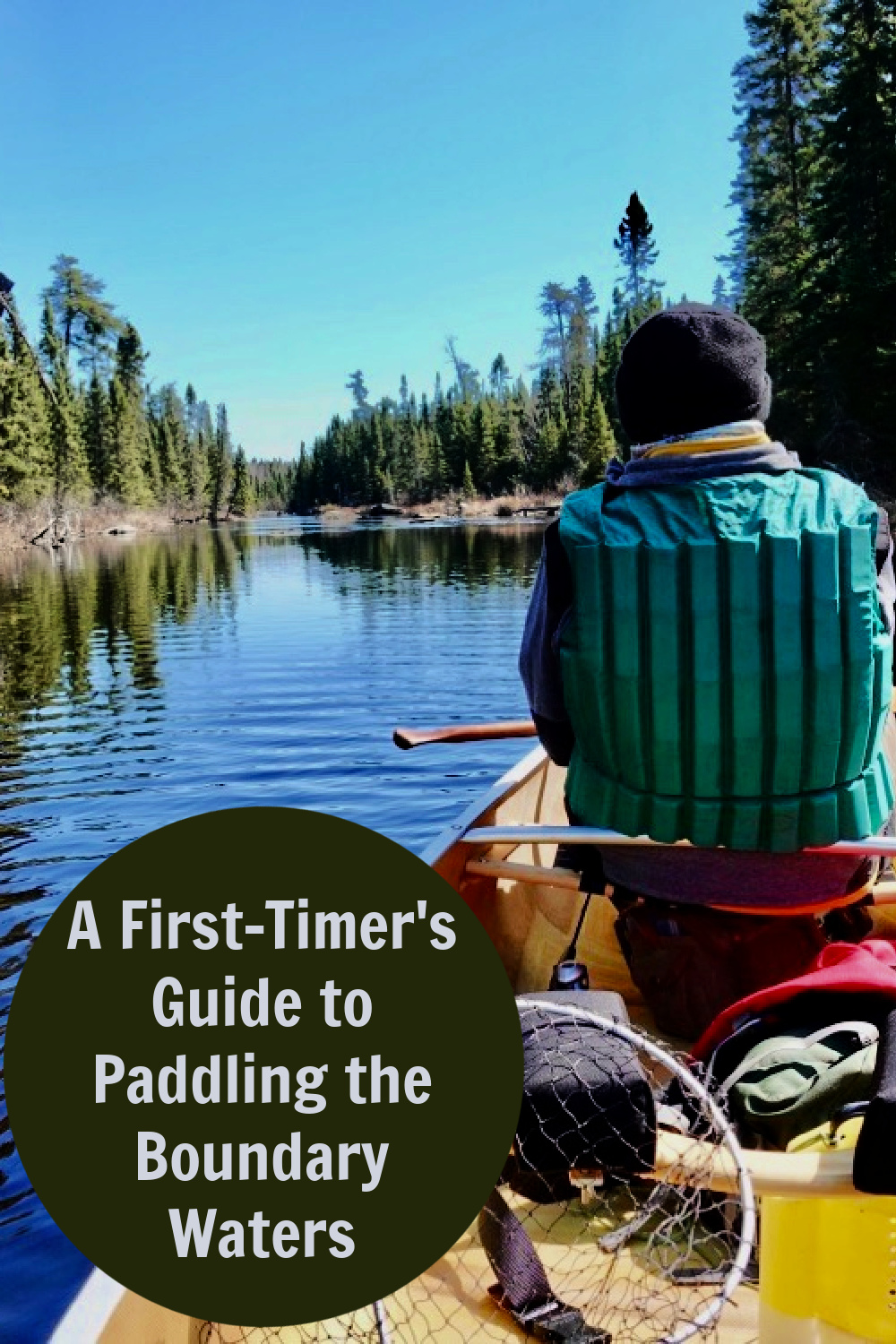
If you enjoyed this Boundary Waters trip planning guides, check out my other posts about the Boundary Waters region of northern Minnesota.

Hi! I’m Ada, a travel writer based in northern Minnesota, on a mission to see the world. I use this travel blog to provide practical, no-nonsense travel tips and itineraries for both domestic and international travels.
Home Airport:
European Christmas Markets
Where I’ve Been:
This is such a detailed post, thank you for sharing all your best tips! I’m from Wisconsin, so I’d love to get out and explore the Boundary Waters! 💙
I used to lead trips in the BWCA for Outward Bound so this post is very near and dear to me. You did an excellent job explaining everything in great detail. This post should be mandatory reading for everyone who wants to venture in the BWCA.
BWCA is such a magnificent place! I love the fact you address the mental preparation needed, a long trek there is no joke.

Ada is a travel writer based in northern Minnesota. She’s spent two decades as a freelance writer. She’s lived in three countries and has visited all 50 states. In addition to traveling the world, she runs a Boundary Waters outfitters and helps people plan canoe trips and other outdoor adventures in northeastern Minnesota.
Other Recent Articles
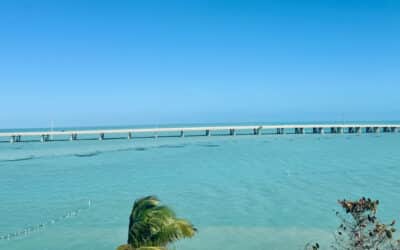
Best Stops On A Florida Keys Road Trip from Miami to Key West
Whether you’re driving from Miami to Key West or just day tripping on the Florida Keys Overseas Highway, you’ll want to include these 10 stops in your drive.

Key West Packing List For A December Visit
My Key West packing list has you covered with what to wear for a winter visit. My complete (& printable!) packing list makes packing for Key West, Florida a cinch.
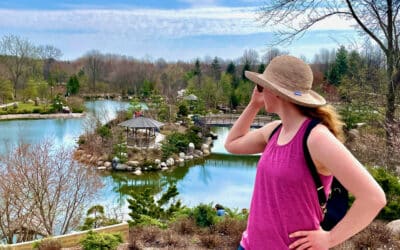
What To Do in Grand Rapids Michigan For A Stellar Weekend
Wondering what to do in Grand Rapids Michigan? This guide rounds up all the best things to do in Grand Rapids including restaurants, mansions, events, art, gardens, and more.
Thanks for signing up!

How to Plan a Boundary Waters Canoe Trip in Minnesota
Start planning your Minnesota Boundary Waters canoe trip with this complete guide including BWCA entry points, Boundary Water camping, & more

Planning a Boundary Waters canoe trip in the Boundary Waters Canoe Area Wilderness (BWCA) involves navigating a labyrinth of over 1,000 lakes and islands. Located on the Minnesota/Canada border, I’ve made countless trips to the BWCA ever since I was a kid and it always delivers when I want a quiet week filled with great views and adventure.
The BWCA is the most-visited wilderness area in the U.S. and for good reason. From short overnight trips to multi-week remote adventures, the BWCA offers a unique camping experience for all skill levels. Like most remote camping trips, though, canoeing the BWCA requires planning in order to secure permits, learn how to navigate lakes and make portages, and assemble the right gear for a successful trip. I’ve made many trips to the BWCA, so in this post, I’m sharing all the important tips and guidance you’ll need to have a successful trip in Minnesota’s great north woods.
In this Boundary Waters canoe trip guide, I share everything you need to know to plan your own canoeing adventure to this amazing and remote area.
Important Reminder: As outdoor recreationists, it’s our responsibility to know how to recreate responsibly on the water whether we’re kayaking, paddleboarding, canoeing, rafting, or boating. Learn how to prevent the spread of aquatic invasive species with 3 easy steps that have a huge impact on our ecosystems.
Best Time to Canoe the Boundary Waters
Since the lakes freeze over in the winter, the best time to canoe the Boundary Waters is between spring, summer, and fall. Typically May through October is the canoeing season.
The summer months are the popular time to go, especially the back half of August. The water is warm enough to swim in and the weather gets up into the 70s and 80s. The main downside to canoeing in the summer months, however, is that mosquitoes and biting flies can put a huge damper on your trip. Bugs peak in mid-June and while the black flies last a week or two, the mosquitos stick around all summer. People share horror stories about the mosquitos, but truthfully they’re not much different than anywhere else in the Midwest.
Visiting during the spring is constrained to the month of May since the lake ice usually doesn’t melt until then. It’s a great month for fishing, solitude, and returning animals and birds, but it can be cold — lows are typically in the 40s.
Fall is one of the best times to visit the BWCA. There are fewer or no bugs, the crowds are basically gone, the fish are returning to the shallow water, and the fall colors are changing. Camping from mid-September to mid-October is the best time to visit if you want to catch the fall foliage as the aspen, birch, and maples leaves begin turning red, orange, and yellow. Make sure to check out these fall camping tips if you plan to visit during this season.
No matter what time of year you visit, it’s important to be prepared for cold temperatures, rainy weather, or submerged and wet gear. Always pack extra warm layers and don’t use cotton.

Planning Your BWCA Route
Bwca entry points.
There are two main BWCA entry points to start your trip: Ely and the Gunflint Trail . In general, the Ely area is quite wooded and has old-growth tree stands you can camp near. Visitors starting in the Gunflint area are likely to see the effects of fires and blowdowns, but while some forests in this area seem more sparse, there’s a more remote, rugged quality to this terrain.
I’ve done a handful of canoe trips out of Ely, but I prefer the Gunflint area for starting a trip because you immediately enter into wilderness with a rugged character.
BWCA Portages
If you’ve never been to the Boundary Waters before, it’s possible you’ve never had to portage a canoe before. Simply put, a portage is when you pick your canoe up and move it overland from one lake to another. The BWCA has over 1,000 lakes connected by portage paths of varying lengths — the shorter and fewer of them on your route, the easier it will be.
Portages are typically measured in rods, which is 16.5 feet long, roughly the length of your canoe. Portaging a canoe isn’t as hard as it seems and it’s actually easy to pick up and carry a canoe by yourself. It has more to do with skill than strength — forget the methods that have you quickly lift the canoe overhead like a powerlifter. Simply follow this method for picking up and carrying the canoe . I’ve seen retired folks do this in the BWCA with no problem at all.
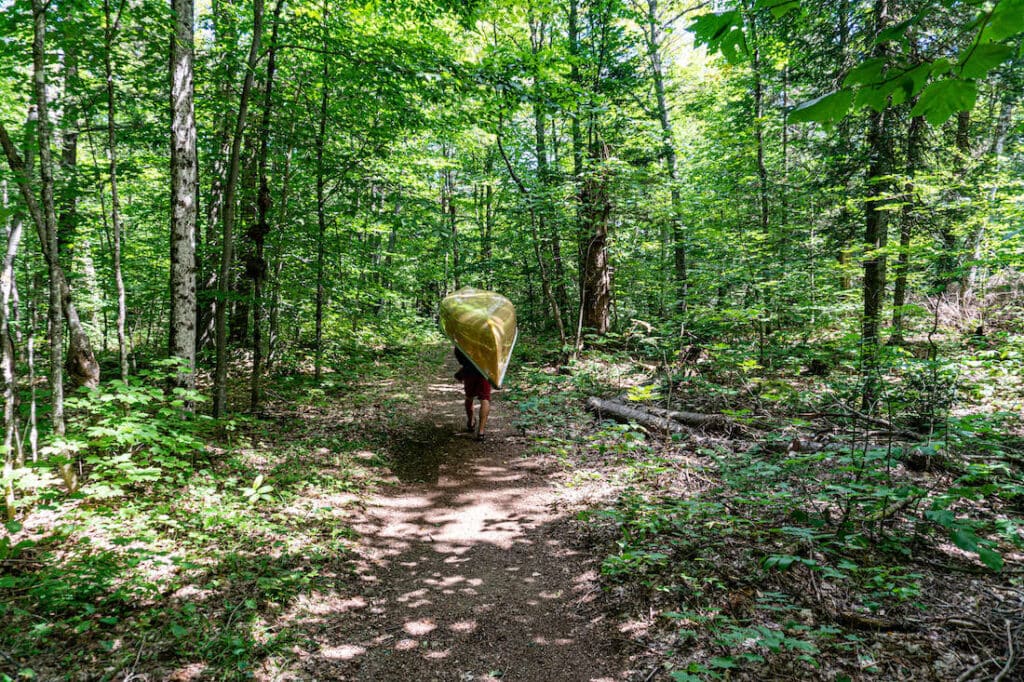
Boundary Waters Route Options
My favorite BWCA route is starting off at the Gunflint Trail at Saganaga Lake and canoeing to Red Rock Lake, Alpine Lake, and Sea Gull Lake to loop back to the start.
There are lots of different route options, though, and you can’t go wrong using the Trip Planner from the Friends of the Boundary Waters Wilderness (more on them later) to cater the route to your trip. You can choose different routes depending on your timeframe, how many portages you’d like to take, how long you want to paddle each day, and your current skill level.
Boundary Waters canoe rentals & Outfitters
While some people bring their own canoes to the BWCA, there are plenty of Boundary Waters canoe rental outfitters in both Ely and the Gunflint Trail. Not only are they inexpensive, but the guides here are a wealth of knowledge for planning your trip, asking questions, and getting some great beta on the best swimming spots and fishing holes. I’ve had great experiences with Voyageur Canoe Outfitters .
Keep in mind that the BWCA is a very large wilderness area, and with so many lakes and islands, you could spend a lifetime exploring different routes. No matter if you choose Ely or Gunflint as your Boundary Waters entry point, you’re going to have a blast.
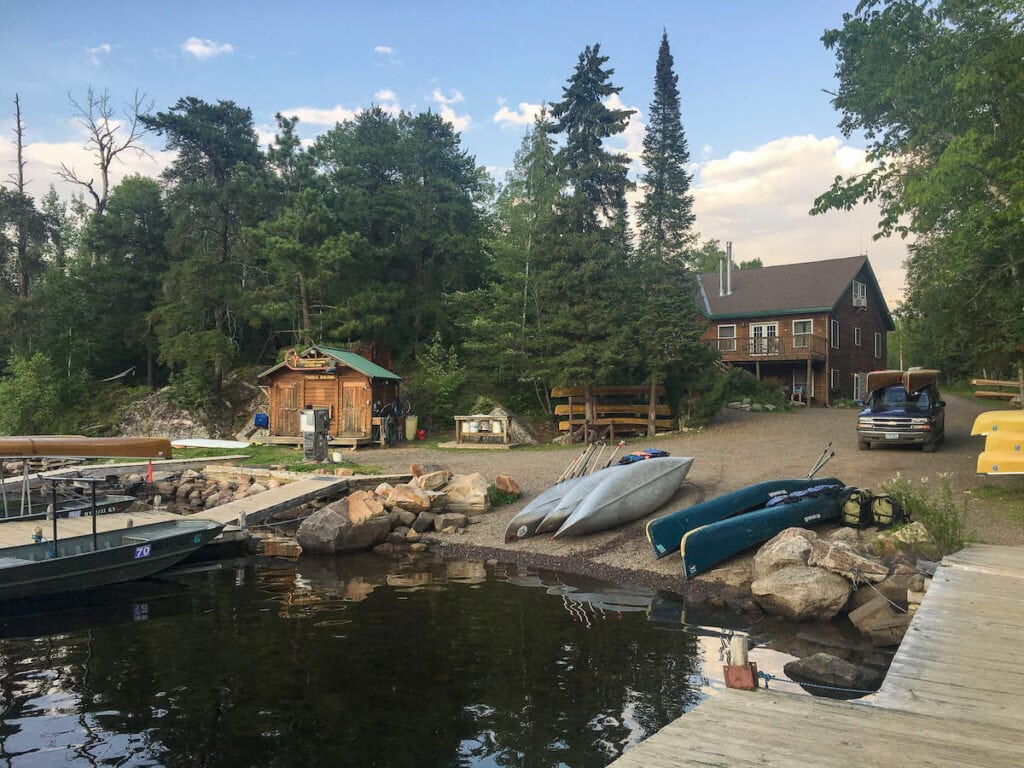
BWCA Permits
Once you’ve decided on where you want to start your trip, you’ll have to secure a BWCA permit. Permits are required for overnight trips from May 1 to September 30 . Walk-up permits are available the day of and the day before your trip, but their availability is not guaranteed. Keep in mind you don’t need to know exactly how many days or how many people are in your party to reserve a permit.
One Boundary Waters permit allows a group of up to 9 people and 4 watercraft to enter the wilderness . You can’t exceed the group limit at any time on water or land. Fees are $16 per adult per trip ($8 per kid per trip), and there’s also a non-refundable $6 reservation fee.
If you plan on fishing, obtain your fishing license before your trip either online or at any gas station/bait shop across the state. If you’re a Minnesota resident, an annual fishing license is $25 or $14 for 72 hours. If you’re a non-resident, it’s $51 annually, $43 for 7 days, or $36 for 72 hours.
The reservation system for Boundary Waters permits opens up at 9 a.m. CT on the last Wednesday of January every year on the BWCA recreation.gov website . If you plan on canoeing outside of the May-September season, you do not need a permit. BWCA canoe rental businesses can also provide permits.
You’ll need to pick up your permits in person at either a Superior National Forest district office or a BWCA outfitter in order to complete the mandatory Leave No Trace & Tread Lightly education session. This is a relatively short video/Q&A session that ensures visitors understand how to minimize their impact in the backcountry and stay safe in the remote wilderness.
While you don’t need a permit to bring a dog into the BWCA, you should bring a current rabies certificate and rabies tag on their collar. Dogs are welcome in the wilderness if they have good voice control, don’t bark or chase wild animals, have experience in a canoe, and are not left unattended . Always be prepared to clean up after your dog.

Boundary Waters Campsites
Boundary Waters campsites are spread throughout the wilderness area and tend to be on wooded shorelines. It’s pretty obvious where most of them are, and they are clearly labeled on BWCA maps. An easy way to tell if a campsite is occupied or not is to look for canoes on the campground shoreline. You can only camp at existing campgrounds in the BWCA and the campgrounds are first-come, first-serve .
It’s a good idea to break camp early and snag the campsite you’d like by early afternoon so you get the one you want. I once slept in and paddled during the afternoon instead and found every campsite was already taken at the lake I had planned to stay on. That meant a much longer day of paddling for me since I had no choice but to canoe on to the next lake and find the next empty campground.
My main consideration when choosing a campground is the view. Do you want to be on a peninsula surrounded by water, in a thickly wooded area, or do you want to make sure you have a great view of the sunset? Take your priorities into account when choosing your spot.
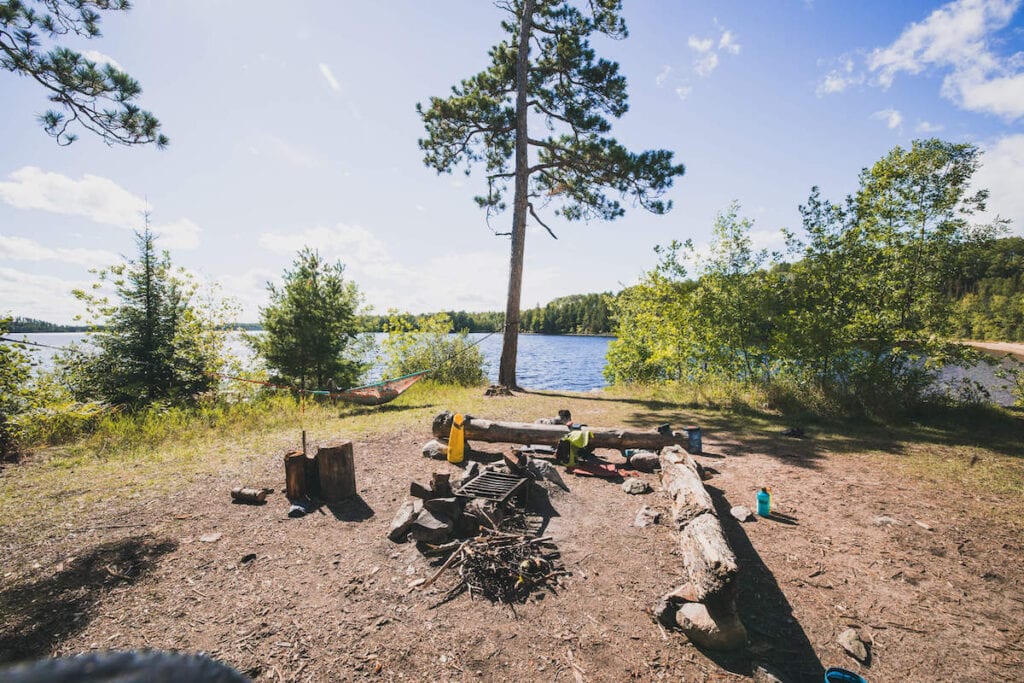
Boundary Waters Canoe Trip Gear
One of the best parts about canoe camping is that you only have to lug your gear on portages.
You can read our 3-day backpacking checklist to get a general idea of what you’ll need. It goes without saying that the Boundary Waters is a remote area; be sure to pack warm clothing and rain gear so you can stay safe in the event of storms, submerged and wet packs, or days or rainy weather.
Shoes for the BWCA
You’ll want good footwear for the Boundary Waters that can deal with water and rugged portages. I recommend water sandals whenever you’re in the canoe or getting in and out. Check our review of the Teva Universal Trail Sandal . These would be a great choice for a BWCA trip.
For portages, you’ll want hiking shoes or boots that have a closed-toe and closed-heel. These will keep your feet and ankles protected while carrying heavy packs and the canoe. Portages in the BWCA are filled with rocks, tree roots, and slippery mud so plan accordingly.
Dry Bags and Canoe Packs
While you can technically use a backpacking pack to carry your gear, using canoe packs from Duluth Pack, Frost River, or Granite Gear has its perks — it’s also what you’ll get from your outfitter if you rent a canoe. You can also invest in a few lightweight dry bags to keep your items dry and separated, like these Sea to Summit Lightweight Dry Sacks .
For a cheaper option, simply line your pack with a garbage bag and arrange your gear inside.
Navigating the Boundary Waters
You’ll need a compass, map, and map case (outfitters will provide these) for a Boundary Waters canoe trip. Fisher Maps , McKenzie , and Voyageur make the best BWCA maps or National Geographic also makes a detailed BWCA Map Pack . There’s little to no cell service in the BWCA, so don’t rely on your phone for navigation and pack or rent a satellite communication device for safety.
To navigate the Boundary Waters, your best bet is to orient yourself using portages, campgrounds, and prominent features of the shoreline like points, islands, bays, etc. It’s normal — and a right of passage — to get pretty confused about exactly where you are since the lakes and islands can make it seem like a maze. Don’t worry, it’s rare for visitors to actually get lost!
Water Gear & Equipment
Aluminum canoes are heavier to carry on portages, but they’ve got one big benefit: they’re bombproof. No need to worry about scraping a rock in these! Kevlar canoes are more fragile and require extra effort when using them, but they’re much lighter to use while paddling and portaging.
You’ll also need a fair amount of gear for your canoe (outfitters will provide all of this): paddles, life jackets , duct tape, sponge and bailer, and cords to tie in your packs. If you’re planning to fish, bring a pole and tackle box. And don’t forget a swimsuit!
Essential Clothing for Paddling
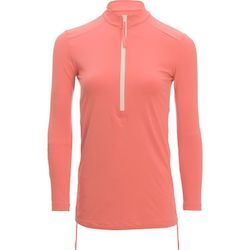
Carve Designs Cruz Rashguard
I prefer wearing a rashguard over sunscreen these days. I own the Cruz in 2 colors and it’s a staple for any water activity because it dries quickly but also keeps you cool, plus the cut is flattering.
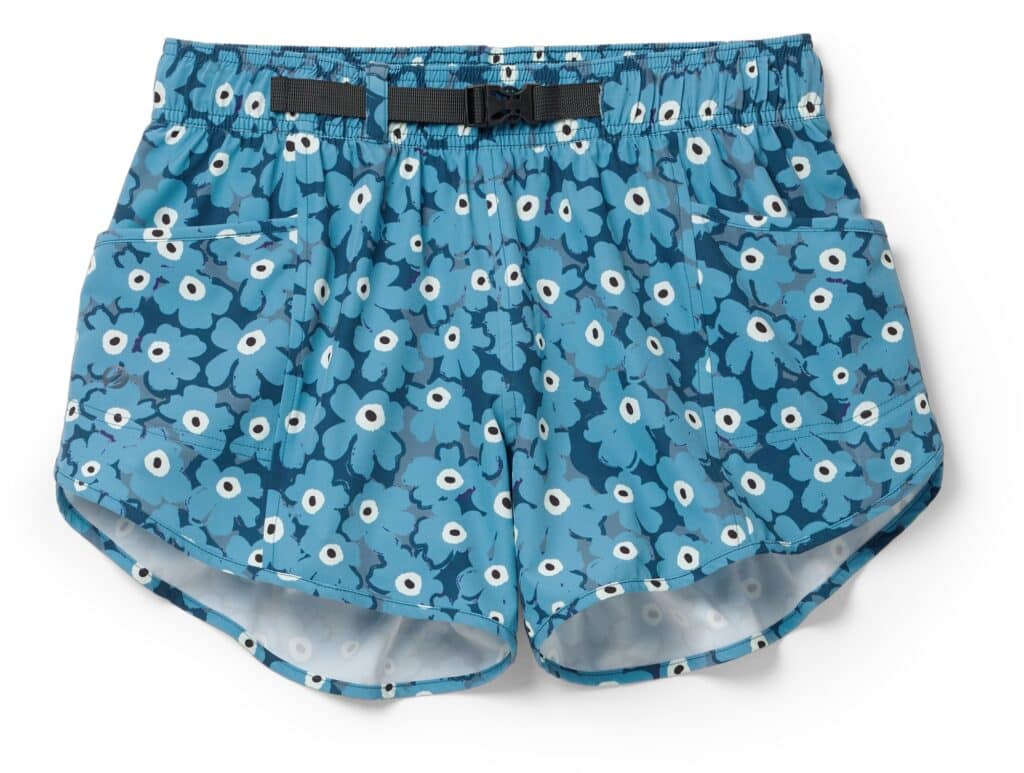
Nani Swimwear Hybrid Explorer Shorts
These shorts are super comfortable, dry really quickly, and come in a bunch of colors and prints. I wear them on all water adventures!

Teva Universal Trail Sandals
Sandals that stay on your feet and can get wet are essential. I like these because they have good grip and can be worn hiking as well, plus they can easily be strapped to your boat when not in use.

Outdoor Research Sunbriolet Hat
You’ll want a wide-brim hat that can get wet and has a chin strap so it stays on in the wind. This Outdoor Research hat is quick-drying, will float if it falls in the water, and comes in a variety of colors.
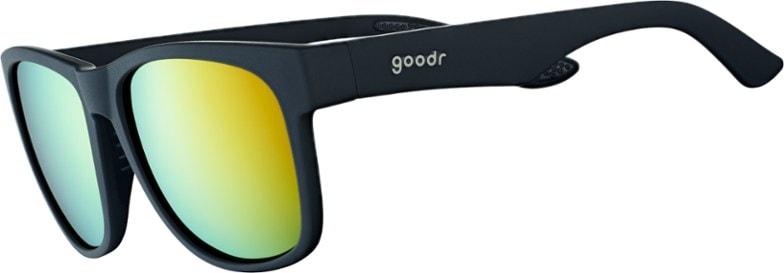
Goodr Polarized Sunglasses
Polarized glasses are best for the reflection of the water. I like to wear budget-friendly sunglasses paddling and I always wear a retainer so I don’t lose them in the water.
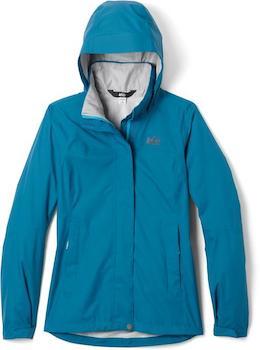
REI Co-op Rainier Rain Jacket
If it’s chilly or windy it can be helpful to have a lightweight rain jacket or windbreaker out on the water with you. I usually pack a jacket like this just in case!
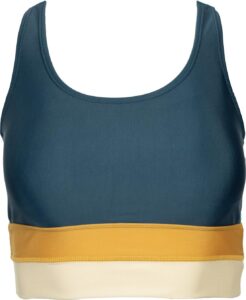
Supportive Swimsuit or Sports Bra
You’ll want a comfortable swimsuit that you can be active in. I like to avoid swimsuits that pull on my neck (like halters) and have been loving Nani Swimwear lately.
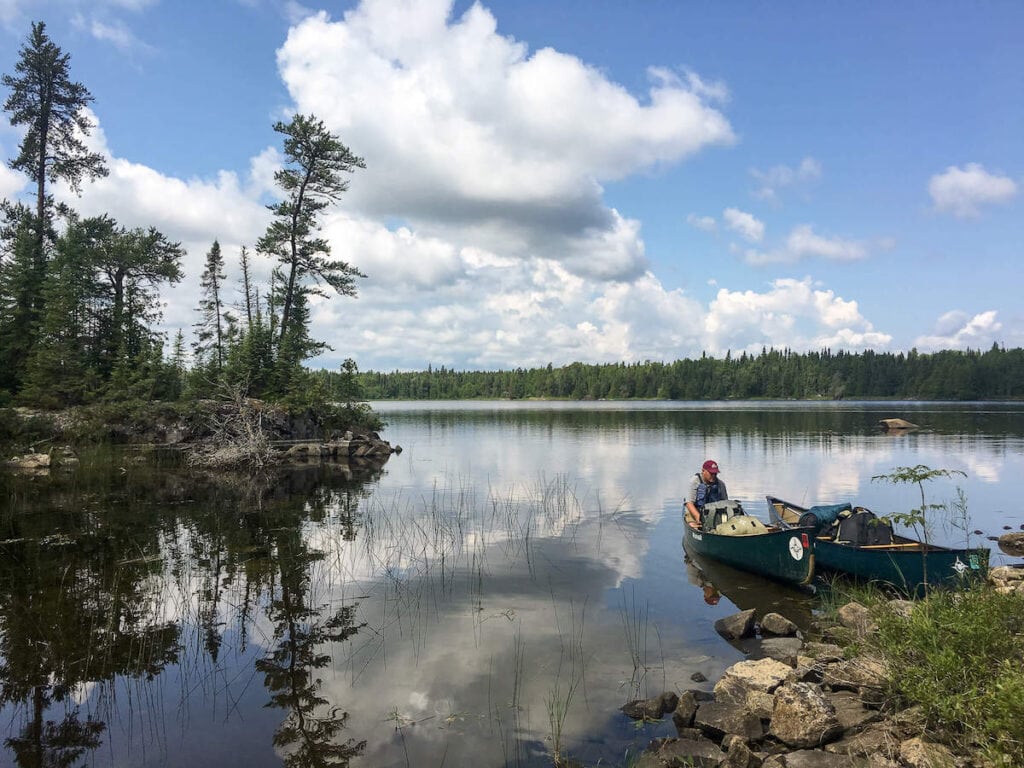
There are bears that live in the BWCA, but they rarely bother people. Most visitors opt to hang their food from a tree instead of bringing a bear canister. To hang your food bag, find a tree limb about 15-20 feet off the ground. Attach a heavy item to the end of your rope and throw it over the branch so that the rope is 4 feet away from the trunk. Now attach your bear sack to the rope, pulley your bag into the air, and tie off your rope. With a little searching, you can usually find a popular tree limb that’s used near each campground.
Water Filtration
Luckily, obtaining water in the Boundary Waters is much easier than most backpacking trips. While old-timers may still drink straight from the lake, it’s safer if you boil or filter the water. Simply paddle out away from your campsite and fill your containers from the lake, then purify or boil the water before using. While I used to drink straight from the lake, it’s not worth risking a Giardia infection.
The Platypus GravityWorks filter system is simple to use without needing to pump it. I’ve also used a Katadyn Hiker Microfilter in the BWCA, too, which I like because you can filter water straight into your water bottle while you’re canoeing.
I recommend filling and treating a 1- to 3-gallon water container when you arrive at your campsite to use for dinner, breakfast, and filling smaller 1-liter Nalgenes for the next day’s paddle.
Fire, Camp Stoves, and Cooking Gear
BWCA campgrounds have a fire pit area that can be used for cooking as long as there isn’t a fire ban in the area. The fires must be small and be put out completely when you’re not in camp. Firewood is available from the surrounding forest, but remember to only take dead and downed wood — live wood doesn’t burn well, anyway. If there is a fire ban, bring a camp stove for your cooking.
Sun Protection
It’s easy to get sunburned on a Boundary Waters canoe trip. Not only are you spending a lot of time out under the sun, but it’s also reflecting upward from your canoe and the water, too! Use sunscreen , a sun hat , and consider UPF clothing to keep the sun at bay.
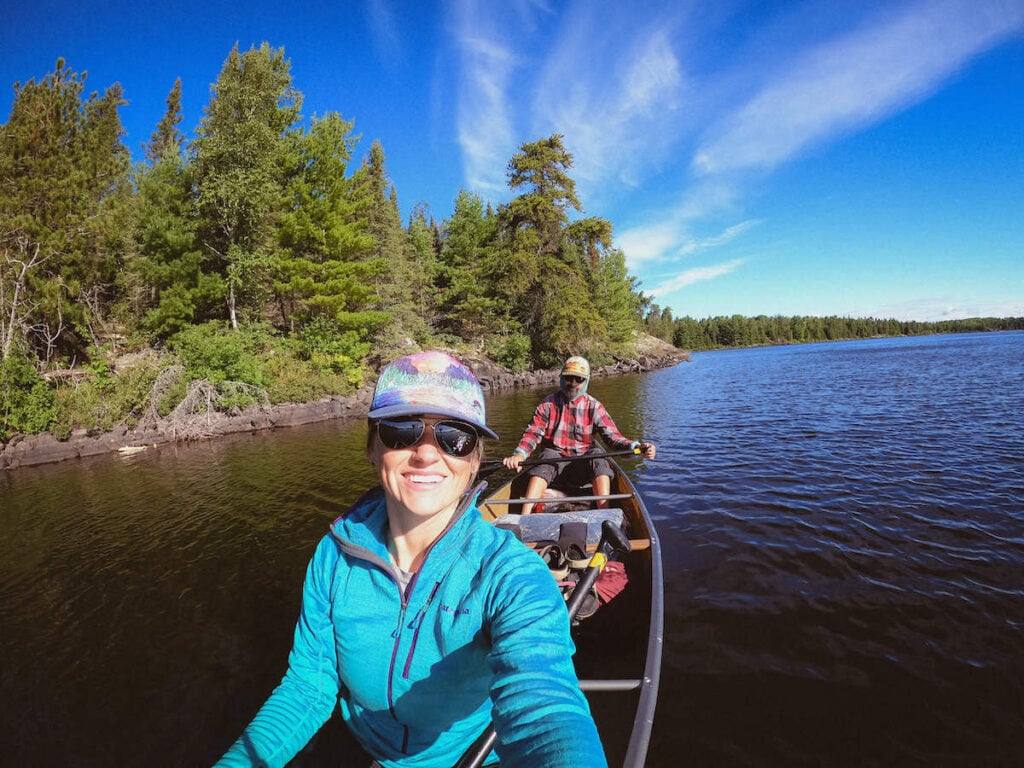
Help Protect the Boundary Waters
The BWCA is a unique, special place. But that doesn’t mean it always will be. Consider supporting the Friends of the Boundary Waters Wilderness to ensure this national treasure stays protected. Proposed copper-sulfide mines like Twin Metals risk contaminating and permanently polluting the Boundary Waters.
Learn more about threats to the BWCA and how you can help protect it by supporting Friends of the Boundary Waters Wilderness .
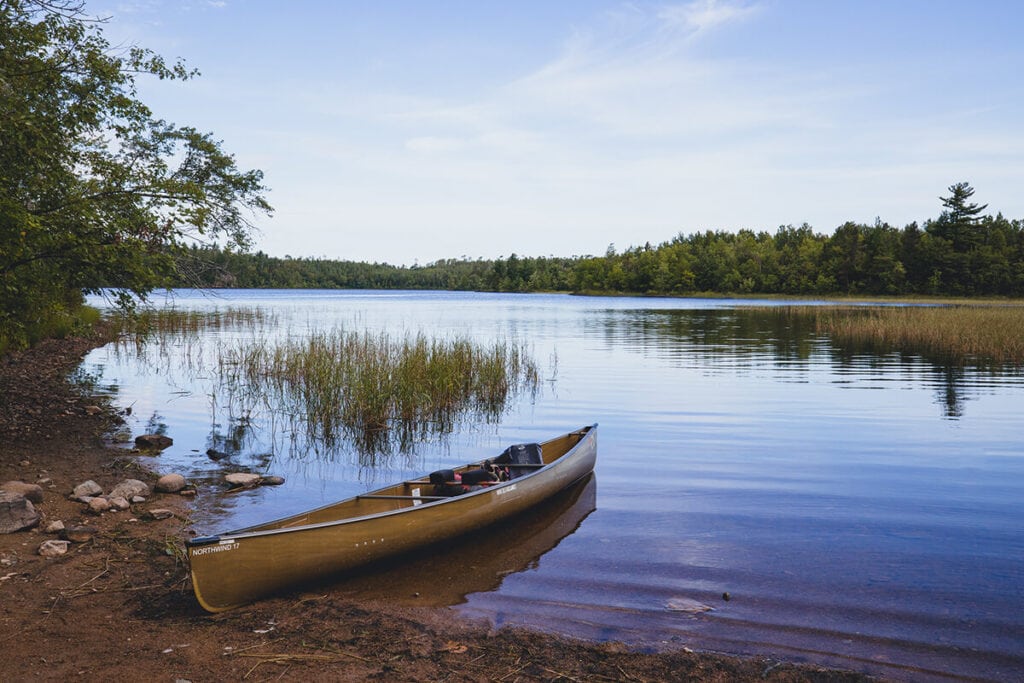
Taking a canoe trip through Minnesota’s Boundary Waters is a trip unlike any other, and thanks to its massive size and undeveloped character, it’s a wilderness you can return to again and again for new adventures. Whether you’re a seasoned paddler or new to canoe camping, the BWCA will not disappoint!
Have you done a Boundary Waters canoe trip or are you planning one? What questions do you still have? Let us know in the comments!
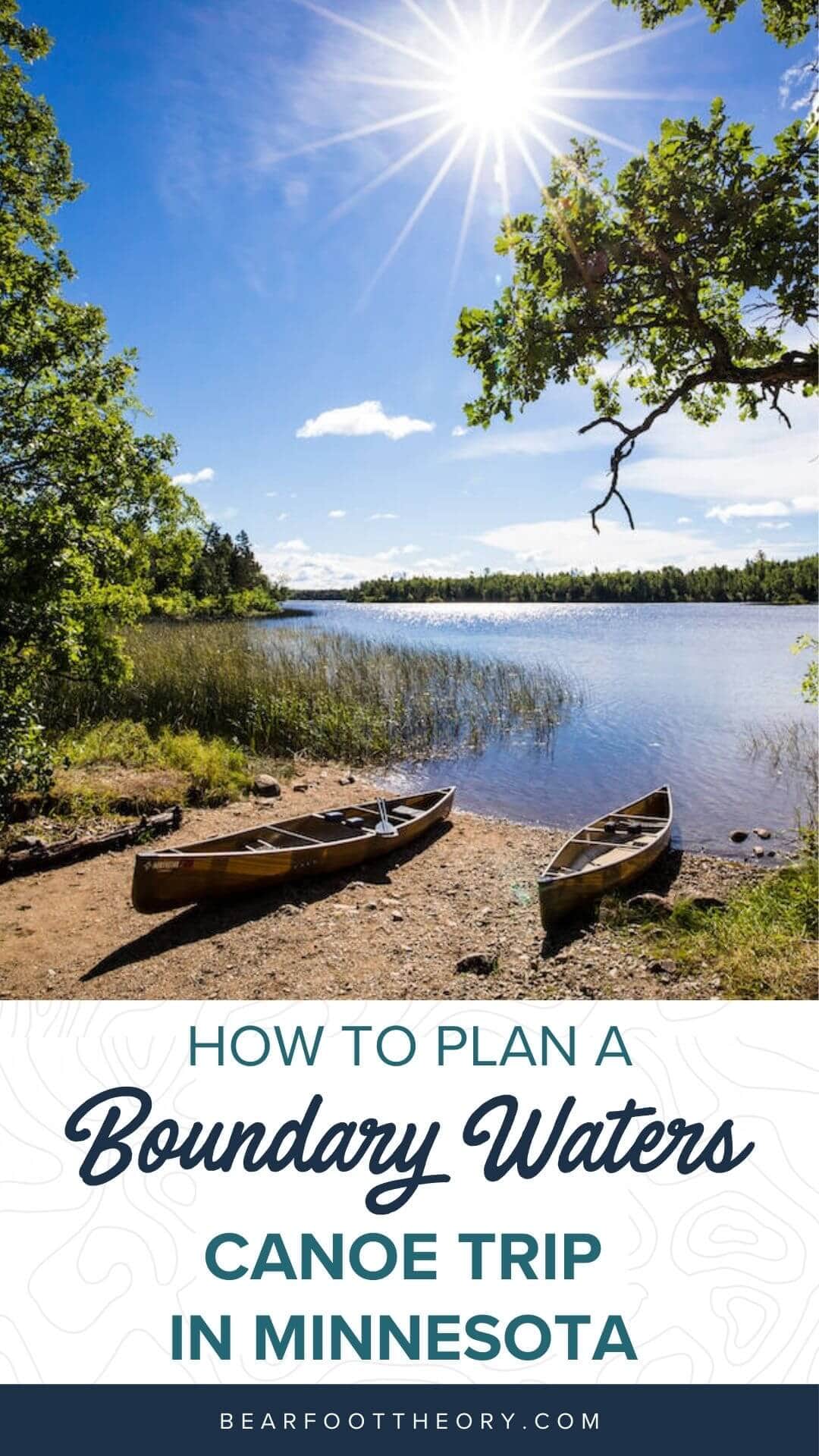
Isak is an outdoor freelance writer that loves traveling through Western public lands in his self-converted van to hike, ski, and find the country’s best used bookstores and coffee shops. When he’s not writing or adventuring, Isak is working on Seek More Wilderness to provide outdoor goods that give back to the outdoors. You can view his writing clips at IsakKvam.com and follow his van adventures on Instagram.
Leave a Reply Cancel reply
Your email address will not be published. Required fields are marked *
Save my name, email, and website in this browser for the next time I comment.
I just got back from the Boundary Waters (6 days, 5 nights in early-mid Sept) and it was amazing. I’m definitely making a trip back sometime, even though I had moments of questioning if i signed up for type 2 fun…. 1) drizzle to rain to soaked tent on night #2, 2) deluge welcomed us to a steep, rocky, slippery campsite, 3) trying to carry a canoe (even part way) on a mile long, level 8.5 portage (and then to find out that was only the second portage of a 3x portage day)…. but then we rewarded with the most beautiful rainbows, silence, starry nights, and disconnection from civilization. Great write up!
That sounds like an adventure!
Amazing clicks of pictures! we have done with same place and its look like a heaven on the earth and we enjoyed our trip. Before visiting this place, we consult with Boundary Waters Catalog about the place and we bought some tools from them. We got some information from some blogs and our trip was amazing.
Hi Eric, thanks for reading & the tip for the Boundary Waters Catalog. Glad you had an awesome trip!

BWCA trip tips: Readers offer their best to first-timers

I’ve paddled wild rivers in Alaska and northern Canada, hiked mountain ranges from the Beartooths to the Cascades and explored scenic wonders ranging from Yellowstone’s mudpots to Costa Rica’s mangrove forests.
All are spectacular.
But every year — as I have done for 40 years — I head north to Minnesota’s beloved Boundary Waters Canoe Area Wilderness. Because in terms of sheer beauty, solitude and accessibility — not to mention often-spectacular fishing — our own wilderness waterway is unparalleled.
While most BWCA visitors are experienced, every year first-timers travel there — some prepared, many others not so much. Newcomers sometimes are conspicuous by the armfuls of gear, often stuffed in black plastic garbage bags, they lug across portages. Or by their bluejeans — slow-drying cotton scorned by most Boundary Waters paddlers.
There are easier, better ways. Exploring the BWCA wilderness should be a wondrous experience, not a pain. And it is, with the proper gear, clothing and know-how.
So on the eve of another open-water BWCA season, we solicited tips for first-timers from readers who are veteran BWCA travelers. And they delivered, offering no-nonsense, sometimes provocative, suggestions — ranging from what adult beverages and footwear to bring, to group, route and gear advice.
We’re not endorsing them all. Some are, well, unusual. Take the suggestions that interest you (edited for length and content) and vet them yourself. But even seasoned BWCA trekkers should find some of the tips thought-provoking.
This ain’t a resort
Go light. Leave the tables, chairs and coolers at home. Go with freeze-dried food (it’s gotten a lot better; Mountain House is a good brand), one change of clothes is plenty, and rent a Kevlar canoe if you don’t have one. If you can’t do a portage in a single trip, you probably have too much stuff. Don’t skimp on the bug spray though. Last June on the Nina Moose River, the mosquitoes were epic.
Nathan Vik, Maplewood
Pick up that birch bark
Besides taking 15 or more trips with experienced groups, I have led 10 or more neophyte groups to the BWCA and always recommend the following:
— Don’t try to carry everything across the portage in one carry. The walking is as much of the experience as the paddling and should be enjoyed. Two carries also allows bringing some “luxury” items.
— Decide ahead of time who is going to carry what on portages and stick to it unless there is common agreement to change. This prevents things being left behind.
— On the first day everyone should pick up a dry piece of birch bark and keep it in a pocket. There are few better fire starters.
— Each one should have their own toilet paper, plus a little extra. Rather than one large roll, have several smaller ones stashed in various places, each in a plastic bag.
— Cross the portage carrying the lightest load first. Enjoy the walk, look at the scenery, and make note of difficult portions of the trail that will have to be dealt with under the heavy load.
— If it is lunch time on the portage, look for a lunch spot off the trail. Avoid lunching at the landings and becoming a nuisance to other visitors.
— Bring a golf umbrella. It is more readily available than your rain jacket and pants. An umbrella and rain pants are far more comfortable, and just as effective as a rain coat around camp, at the latrine or crossing a portage during a passing shower.
— Boxed wine is good. Leave the box behind and bring only the bladder. When the wine is gone, the bladder is a good water flask.
Phil Behrend, Minneapolis
Sense of humor a must
Welcome to one of the most unique, beautiful places on Earth.
Every spring our group gets together to plan our trip. Talk about what kind of trip you want, traveling from lake to lake or base camping with day trips. Talk about your route, get maps and get familiar with them. Talk about equipment, food, clothing and any little things you may want to bring. Talk about all the fun you will have.
Safety first! Wear your PFDs, put on sunscreen, and pay attention to the skies and winds. Pack your rain jacket on the top of your Duluth pack. Be prepared for all kinds of weather. You can still have fun if it rains.
Don’t bring more than you can carry, but bring enough to be comfortable for all kinds of weather. Walkie-talkies are on our equipment list. It is easy to get out of talking range in your canoes. When you pick up your permit, pay attention to the movie and do what it says.
Bring your sense of humor and sense of adventure. Be respectful of this precious wilderness area. Take care of it.
Katie Maiers, Minneapolis
Early, early, early
Here are a few tips for the first-timers:
— Do NOT overpack anything — food, clothing, unnecessary items. Think about every ounce you’re going to carry.
— Make camp early. Which means get on the water early; early morning is gorgeous in the BW. Be off the water by early afternoon.
— Bring a tarp. In wind, rain and hail, it will be worth the weight.
— Wear hiking boots on the portages. I’ve seen people in flip-flops. They have to be rookies. You’re a long way from help if you gash open a foot, sprain an ankle, etc.
Tom Pecharich, Rogers
You’ve been warned
The lakes and streams on the Canadian Shield are beautiful but carry risks. The rocks are especially beautiful and dangerous along the shoreline. The black ones and especially wet black rocks are very slippery, like grease. Consider you’ve been warned.
Jim Goudy, Austin
Books, bugs and brushing
Here are a few tips that I recommend for any BWCA camper.
— Don’t forget your toothbrush!
— For God’s sake, bring a head net to keep bugs away.
— You aren’t going to read that novel; leave it at home.
— 100 feet of parachute cord makes life easier in ways you haven’t thought of yet (but will when you need it).
— Even if you have waterproof bags, wrap everything you’ve packed in a 10-x-10 tarp. It can serve you in a million ways.
— Don’t rush. The wilderness doesn’t care how many trips you make per portage.
— Learn how to paddle and carry a canoe on sunny days BEFORE you go. The grading curve gets steeper when it’s pouring buckets of rain, you’re sliding around in the mud, and you are being eaten alive by mosquitoes.
— Leave no trace! Pack out every single piece of trash you bring in. Nothing brings you back to the “real world” you are escaping than a piece of trash on the trail.
Brian Carrier, Buffalo
Experienced paddler
Go with someone who knows what they are doing and has been there many times before. It is the fastest possible way to get a leg up on traveling by canoe, and will allow you to quickly gain skills and tricks that are otherwise earned “the hard way.” This really can mean the difference between a lovely vacation, and an “I’m never doing this again” moment.
Jon Brelie, Minneapolis
Layover day required
As a 12-time veteran of the BWCA, I have a few tips:
Take a layover day. The whole reason you have ventured so far north was to relax and enjoy nature, so do it.
Call an audible. Every trip can be planned down to the exact minute, but what happens when the campsite you picked is taken or the portage is flooded? Most of my favorite memories are from unplanned hiatuses that are more enjoyable than the original plan.
Bring an extra paddle and life jacket. I have been on 12 different summer trips and have had five broken paddles.
Get the right maps. Follow the rules. As an avid outdoorsman I love the wilderness but have more friends every time who want to come or cheat the rules. No cans makes your packs lighter, small groups make it more enjoyable. I’ve seen eight moose because we stay with our small group and stay quiet.
Tony Johnson,
Planning is essential
— Identify your possible group members and the group leader. Plan a “reasonable” route — for first-timers, 5 to 7 miles a day, depending on the age and physical abilities of the group.
— Get your entry permit as early as possible.
— Plan a group packing list (I have a working Excel sheet of the “group gear” list I edit every year to add/remove things as a good starting template).
— The group leader should estimate expenses and tell each member what their estimated individual contribution will be. The group leader should collect a financial commitment from the other members. It’s easy for a potential group member to back out of the trip if they have no financial commitment.
— Have a meeting where there is a “group inventory” of gear.
— Plan out each meal and how much snack food the group will have throughout the trip. Also, allocate a small amount of food in excess as an emergency.
— Pack in advance! Weigh your packs, see how everything fits, and test carrying the packs as if on a portage.
Jeremy Singleton, Savage
Feet in the water
Pack shoes or sandals that can dry out quickly or that you’re not worried about getting wet! It really helps to guide your canoe into portages or camp sites by getting out of the canoe while in shallow water.
David Sandager, St. Paul
Bears and scotch
The rocks can be treacherous — always know where your feet are when you’re portaging or just walking around your camp site. Paddle the lightest canoe possible, but avoid noisy aluminum — portaging a heavy canoe is no fun. Re: your food packs, don’t worry about bears too much, but be mindful of squirrels. They can chew through cloth and plastic in a hurry. I’ve never worried about getting my drinking water from the lakes except when near a beaver dam, where giardia is a risk factor. That said, my favorite drink in canoe country is scotch & Boundary Waters — scotch kills the giardia and who knows what else? The most important tip: Enjoy! It’s a rare privilege to be able to paddle in such a magical place.
Mike Kluznik, Mendota Heights
Don’t count on eating fish
My sister and I will take our 22nd BWCA trip this June. Our tips include:
— Go with a veteran the first time. Watch, listen and learn.
— Decide why you are going. Is it for fishing? Enjoying the silence? Photography? Plan your trip accordingly.
— Don’t think you’re going to eat fish every meal. Between weather, wind and mayflies, they may not be biting.
— Be OK with, and prepared for, rain, bugs, wind and bugs (did we say bugs?!?)
— Leave the books and electronics at home. Just be in nature and watch. You’ll see amazing things.
Nancy Rosman, Forest Lake
Virginia Spiegel, Byron, Ill.
Dry your own food
Always bring a stocking hat and gloves. Learned the hard way two years ago when I woke up to frost on my tent — on Aug. 2. Make and pack your own dried meals. They are less expensive and taste so much better than what’s available to buy. Almost any recipe can be dried with a few, simple tweaks.
Stephanie Dowell, Buhl
Bourbon and sausage
Our essentials:
Gear:? rain pants and jacket; good sturdy boots with ankle support; wool socks (wet, soggy feet, no problem!); wool sweater.
Calories:? summer sausage (for snack or fried for breakfast); waxed cheese (keeps surprisingly well and the fat/protein combo is awesome); nuts and more nuts.
Drink:? The portable UV wand is so much better than pumping a water filter; advise one wand per person, takes about one minute to purify a bottle of lake water. Bourbon! Nothing like it to warm you up after a windy, rainy, cold day. Starbucks has a great instant coffee.
Austin and Rachel Damiani, Minneapolis
An outfitter makes it easy
Use an outfitter, especially if you are not equipped to camp or experienced to camp or only enter the BWCA rarely. Your trip will be much less stressful and more enjoyable when the outfitter takes care of everything. This was how I went the first time with my 12-year-old son and how I’d go again.
the rev. Mike VerWay, Inver Grove Heights
Respect your setting
My suggestions as an avid canoeist:
Respect. It should go without saying that one should respect the BWCA, after all, it is one of the last true wildernesses in the Lower 48.
Have a plan. Be sure that family members or friends know an approximate route of what lakes, portages and other detours you may take. Pack out what you pack in.
Etiquette. If you come to a portage where a group is unloading their things back into the water, give them the courtesy of finishing up their launch, especially if it’s a crowded landing area.
Enjoy yourself. Take a breath. Oftentimes we can get caught up in the moment of a difficult portage or an impossibly hard paddle. But take heart knowing that you are exploring a wilderness that very few get to traverse. Take solace knowing that you are surrounded by the sublime.
Anthony Skubic, Tower, Minn. ___
(c)2015 the Star Tribune (Minneapolis)
Visit the Star Tribune (Minneapolis) at www.startribune.com
Distributed by Tribune Content Agency, LLC.
This article was written by Doug Smith from Star Tribune and was legally licensed through the NewsCred publisher network.
- Latest Posts
- Your Complicated Relationship With the Kardashians
- Jimmy vs. Jimmy: If you had to watch only Kimmel or Fallon for the rest of your life
- 10 Thoughts That Go Through Your Mind When You're Tubing
You may also like

May Free Previews on DISH: Hallmark Family, Magnolia, and More

‘House Hunters: All Stars’ is HGTV’s Newest Crossover

Nominate a Teacher for DISH Hometown Heroes’ Educator of the Year

DISH Wants to Honor Your Local Hometown Heroes!

As the Magnolia Network Launches, Here’s What to Watch

The DISH Holiday App Brings the North Pole to Your Ho-Ho-Home
- The Podcast
- The Explore Guide
- State Parks
- Activities & Attractions
- Maps & Guides
- Hidden Gems
- Everything Else
- The Discover Guide (Coming Back Soon)
- Advertise With Us
- Privacy Policy
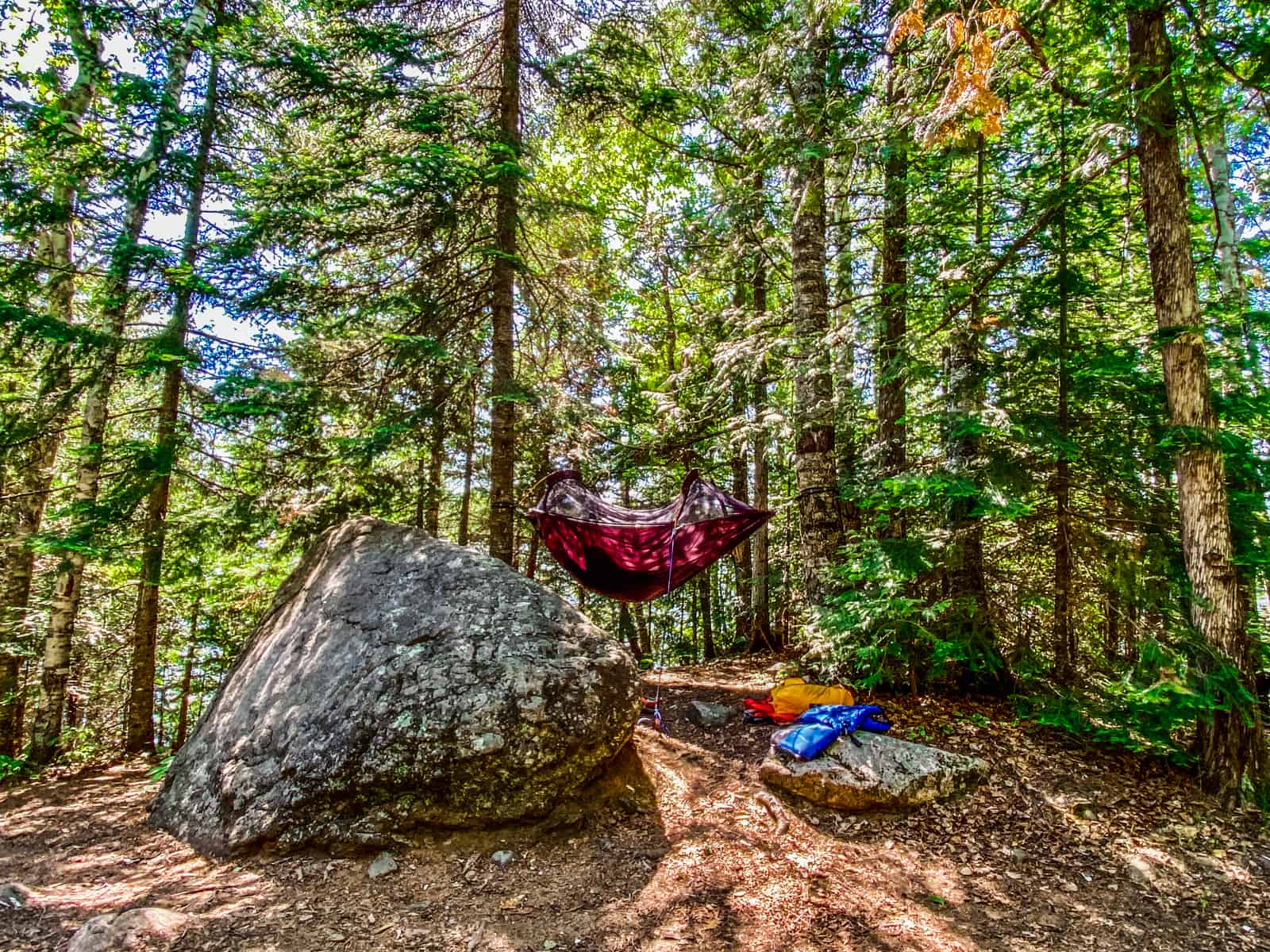
A Beginner's Guide to the BWCA
Heading into the Boundary Waters Canoe Area Wilderness (BWCA) can be intimidating, especially if you’ve never been there before. Many experienced visitors to the BWCA plan epic, weeks long trips involving many portages and several lakes, catching fish for food, and embracing the full disconnect from society. Hearing of their travels, many wonder if a trip into the BWCA is something they can do without hiring a guide or delving into a world way outside of their comfort zone. I’m here to tell you that the BWCA can be accessible for first time visitors who want to dip a toe into the BWCA without having to dedicate themselves to a long trek into this beautiful wilderness area. In this, A Beginner’s Guide to the BWCA, we will offer helpful tips and tricks to getting you and your family into the BWCA so you can experience it. Maybe after your first trip in you will realize that the BWCA is not that intimidating and can do a longer trip in the future.
This guide will pertain to overnight, summertime use of the BWCA and assumes you are paddling into the BWCA sometime between May 1st through September 30th. This is the “quota season” for the BWCA when permits are required. For now, we will also only cover the Gunflint Trail and Sawbill Trail areas. Someday we hope to travel over to Ely to become more familiar with that part of the BWCA.
Feel you already know enough about the BWCA and planning a trip? Skip down to the second part of this guide to see our suggested routes and outfitters.
For day use, check out our article on taking a Day Trip to Rose Lake . For wintertime use, check out episode 19 of the podcast when we go ice fishing in the BWCA.

Common Terminology
As you start planning your BWCA trip, you’ll come across some terms that may be confusing at first. Here’s a basic list of these common words and terms you will come across in this guide.
BWCA or BWCAW: Boundary Waters Canoe Area Wilderness Quetico: A separate wilderness provincial park located north/northwest of the BWCA in Canada- many BWCA travelers also travel into Quetico during their trips. Outfitters: A business that supplies those traveling into the BWCA with gear rentals, food plans, boats, PDFs, etc. Entry Points (EP): Permitted areas where you can enter the BWCA. EPs are numbered (EP 1, EP 2, etc.). Portage: The act of carrying a boat between two waterways. In this case, usually a trail on land that connects one lake to another lake. Rods: The distance used to measure a portage. 1 Rod = 16.5 feet, 5.5 yards, or 5 meters.
What is the BWCA
The BWCA is is 1-million-acre wilderness area that is found within the Superior National Forest in northeastern Minnesota. As a designated wilderness area, the BWCA is void of motorized vehicles (except in the event of an emergency) and modern comforts like electricity and plumbing since the Boundary Waters Canoe Area Wilderness Act was passed in 1978. No one can live in the BWCA, and entry to the area requires a permit for both day use and overnight use.
The most common way to get around the BWCA is by non-motorized boat like a canoe or a kayak. Hence the “C” in BWCA. There are also areas that are accessible by hiking, but most visitors plan to get around via boat. You can visit the BWCA year round, but the area receives the most visitors in the summer months. Because of it’s designation as a wilderness area, low-impact (leave no trace) visiting is required. In fact, visitors to the BWCA are asked to watch a series of videos on how to visit and enjoy the BWCA without leaving any trace of their visit.
The BWCA can be accessed from several places around Northern Minnesota. Entry Points (EP), which are numbered and marked on overnight entry permits, can be found in Cook, Lake, and Saint Louis Counties, with the most popular entry points located near Ely and on the Gunflint Trail in Grand Marais.
In a nutshell, the BWCA is a large wilderness area full of lakes, rivers, streams, wild animals, plants, trees, and some people in canoes. It’s a great destination for those wanting to reconnect with nature and get away from modern conveniences. There are many ways that one can enjoy the BWCA, and in our Beginner’s Guide we will offer some suggestions for how you can experience it for the first time, based on personal experience.
Work with an Outfitter
It’s normal to be a little nervous about taking a trip into the BWCA. There are a lot of rules and regulations involved, and even an experienced camper may not be aware of all of the gear you may need. Luckily, a large part of the area’s economy is centered around preparing for BWCA trips. These businesses are called “Outfitters” and there are a few dozen of them located all along the BWCA border from Grand Marais to Ely.
All outfitters offer package deals that will supply you with almost everything you need for your trip. This may include tents, sleeping bags, packs, canoes, food, cooking gear, and more. The easiest way to experience the BWCA is to get a complete package from an outfitter. Then, all you need to bring is your clothing, personal care items, water bottles, etc. Take the guesswork out of what you will need and let the experts set you up. They can even help you reserve your permit. Package deals vary in price based on outfitters, but you can expect to spend $85-150 per person per day. Prices vary based on the outfitter you choose, length of stay, and package selected. Refer to your chosen outfitter for exact pricing.
If you’re an avid camper and already have a lot of the gear that an outfitter will provide, you can do an a la carte package and only rent or purchase the items you will need that you do not currently own. This can cut down on the cost dramatically.
There’s another perk to using an outfitter, besides getting the gear you need. A good outfitter will also help you select the best route for your group, help you identify camping areas, and give you suggestions on how to handle portages. Basically, they can act as a personal trip planner and give expert advice. You can also purchase your permit through the outfitter. These are usually small businesses with owners and employees who really care about the BWCA and creating the best experience for all visitors. They may also be the first to realize if something has gone wrong with your journey if you do not show up on your scheduled return day. Many expert BWCA travelers opt to use an outfitter for basic needs, like a canoe rental, just so they have that assurance that someone will notice pretty quickly if they do not return on time.
Finally, one more perk to using an outfitter, is that many offer cabins or have nearby campsites for rent where you can stay before and after your BWCA journey. Not all outfitters offer this, but most do and it’s a great way to start and end your BWCA trip.
So we recommend working with an outfitter, even if it’s just for a few items you need, help planning your trip, or a place to stay before and after.
Do It Yourself | Reserving Your Own Permit
Even though we recommend going through an outfitter, it is possible to venture into the BWCA without the assistance of an outfitter. If you have all the gear you think you’ll need, have a boat, and have researched your route well, you can definitely go into the BWCA on your own. You will need to secure a permit via Recreation.gov and learn where you need to go to obtain your permit. They can usually be collected at a ranger’s station or outfitter. Note that due to the COVID-19 Pandemic, visitors coming in 2020 are allowed to print their permits out and do not need to stop anywhere to pick it up.
An overnight permit has a fee attached and it’s recommended you book your permit far in advance. The number of overnight permits issued for each EP is limited. For instance, as I am writing this in June 2020, Overnight Paddle Permits at EP 38: Sawbill Lake is limited to 14 permits per day. Looking at available permits over the next ten days, only one permit is available and it’s on a Tuesday. EP limits range from 1 to 27 permits per day, with most having under 5 permits per day. If you have a specific EP you want to enter on a specific day and the permits are sold out you cannot enter the BWCA from that EP on that day. So, plan early. If you find yourself planning a last-minute trip, go to Recreation.gov and see what permits are available and where and plan your trip based on that.
You need to provide a lot of information when you book your permit. Not only do you need to know where and when you plan to enter the BWCA, but also how long you plan to stay in, how many people will be in your group, and how many boats your group will have. There is a limit of nine people and four watercraft per group. You cannot exceed this limit any time or anywhere in the BWCA, including at campsites and portages. This is why it’s important to plan ahead and be prepared if you are going into the BWCA without the assistance of an outfitter.
Note that you can also book your own permit even if you are working with an outfitter. Just make sure you are purchasing the correct permit for the correct EP.
Do It Yourself | Plan Ahead “Be Like Barb”
If you are doing everything on your own- plan ahead! Your actual journey will likely vary a bit from you planned route, ours certainly did. But, having an idea of the route you want to take and the length of time it will take to complete that route is essential. Remember that your permit only covers you for a certain length of time. You need to be sure you can enter and exit the BWCA on the permitted days (leaving early is permitted).
There are many great resources for finding the best route for your paddling level and length of trip. BWCA.com is probably the best, most informative planning tool on the internet today. Although note that old information is not cleared off of the website so you may be reading route plans and reviews that are a decade old. Even with low-impact travel within the BWCA, things change often. Sometimes campsites and portages are closed and areas are no longer accessible. Specific events may also affect where you can go and when. For instance, they can close a series of campsites if enough campers report encountering a bear. During the COVID-19 pandemic, some areas that bring paddlers into Canadian waters were closed since the border closure happened. So do your research to ensure the route you want to take is available for your trip.
Then do your research on what to bring with you. Even an avid camper may not have everything they need in order to take a trip into the BWCA. There is no access to drinkable water within the BWCA, so you will need to find a way to filter water, either through iodine tablets or a water filtration system. You will want to prepare to hang your food bag at night to avoid attracting bears to your campsite. And, you will want to make sure you have the appropriate items in a first aid kit in case of emergency. A good way to know what you’ll need to pack for your trip is to check out what’s included in an outfitter’s package. Like this list from Sawbill Canoe Outfitters .
Just plan to plan and plan a lot. You should not “wing it” on a BWCA trip. That being said, you also want to remain flexible with your time. Give yourself more time you need in case you encounter inclement weather, heavy winds, forest fires, wild animal encounters, or busy portages.
Picking an EP | Outfitter and Resort Entry Points
When choosing your EP for your first BWCA trip, we recommend choosing an EP near an outfitter or resort. Even if you don’t plan to use that outfitter. These EP’s usually experience heavier travel and gives you the most opportunity for getting help, if needed. Entering in an isolated EP may sound like a great way to do a BWCA trip, and probably is, but for your first trip in we’d recommend not going too far off the beaten path.
Here is a list of our preferred beginner EPs located near an outfitter in Cook County. Scroll down to the second part of this guide for details on each EP.
- EP 38 | Sawbill Lake | Sawbill Canoe Outfitters
- EP 64 | East Bearskin Lake | Bearskin Wilderness Outfitters
- EP 60 | Duncan Lake | Hungry Jack Lodge and Hungry Jack Outfitters (both located on Hungry Jack Lake nearby)
- EP 47 | Lizz and Swamp Lakes | Rockwood Outfitters, Blackbear Lodge, Poplar Hus, Trail Center (all located on Poplar Lake)
- EP 57 | Magnetic Lake | Gunflint Outfitters, Gunflint Lodge, Gunflint Pines
- EP 51 | Missing Link Lake | Tuscarora Outfitters (located on Round Lake)
- EP 54/EP 54 A | Seagull Lake and Seagull Lake Only | Seagull Outfitters
- EP 55/EP 55A | Saganaga Lake and Saganaga Lake Only | Voyageur Canoe Outfitters
One Lake & Short Portage Trips
Now that you know how to get into the BWCA, it’s time to figure out where you want to go. If it’s your first trip in, you may want to take it easy and start slow with one-lake or short-portage trips. Of course, you can go all out and do an epic 2-week trip covering many lakes during your travels. If that’s the case, plan ahead and have a great time! But, if you’re looking to just get into the BWCA on a short trip or take it easy on your first time in, we recommend short-portage trips. If you are traveling with very young children or someone with mobility issues, consider a one-lake trip. Many avid-BWCA fans will tell you that you cannot do a trip without experiencing at least one portage, but it is possible, if needed, to stay on one lake your entire journey and still have a lot to see and do.
Lakes worthy of one-lake trips include Sawbill Lake, Seagull Lake, and Saganaga Lake. In fact, as you can see from our list above, Seagull Lake and Saganaga Lake have permits specifically for travelers that do not plan to leave those lakes during their trips, so this is pretty common. If choosing a one-lake trip based on how easy the lake is to navigate, choose Sawbill or Seagull. Saganaga is a massive, deep lake filled with dozens of islands that can be tricky for a beginner to navigate.
When we talk about short portages, we are referring to lakes that are closer together and can be accessed by a portage that is 100-rods or less. 100 yards is the length of five and a half football fields. I also have Extremely-Short-Portage Trips in the list below. Those are routes that have portages all around or under 50-rods. Scroll down to the second part of the Beginner’s Guide to see some suggested routes.
Big Lakes Versus Small Lakes
Another thing to consider when planning your BWCA trip is the type of lake you want to travel on. There are big lakes, medium lakes, and small lakes. Many people, especially beginners, like to travel on smaller lakes. They tend to be affected less my severe weather (waves) and get warmer sooner. Smaller lakes also tend to be better for fishing. But, smaller lakes also have fewer available campsites and require more portages.
On the flip side, traveling on big lakes provides more camping opportunities, which is great for busy weekends where finding a campsite can be a challenge. Big lakes also provide for opportunities to not do any portages at all, as mentioned above.
Of course, there are routes that will bring you to a variety of lakes, both big and small. We think the perfect trip for a beginner is a combination of the two, so you can experience both and decide for future trips where you want to go.
Basecamp Versus Moving Campsites
If you are going into the BWCA on a busy weekend (which is pretty much every weekend in the summer months), you may find that campsites are very limited. On the day we entered Sawbill Lake for our first BWCA trip, we were warned by Dan Shirley, one of the owners of Sawbill Outfitters, that a couple of groups had returned a day earlier the previous evening due to not being able to find a campsite. His suggested was to go in and find a campsite first, and then explore. Luckily, we found a campsite almost right away that was open, so we grabbed it and then stayed there for the rest of our trip. This is called a Basecamp- when you claim a campsite right away and stay there for your entire trip. Then you can explore other areas and lakes during the day, returning to your basecamp at night. This does limit you to how far you can travel each day. And remember, you need to get back to your camp at the end of the day!
Alternatively, you can move to a different campsite each day of your trip or every couple of days. This way you can travel a longer distance. With this style of traveling, you will have to carefully pack up your campsite each time you move. Remember, you are to leave no trace at your campsite! This means taking the time and effort to check your campsite before you leave to ensure you didn’t leave behind any trash, gear, or food. Because packing up a campsite can be time consuming, you may want to use a Basecamp for your first trip in.
2-Night, 3-Night, 4-Night Trips
As a first time traveler into the BWCA, you may want to consider a shorter trip. This way you aren’t spending as much money and time on a trip only to find out it’s not the type of trip for you. Shorter trips also means less gear to carry across portages. All of the trips we have listed below can be done during 2-, 3-, and 4-night trips.
If you want to jump into the BWCA with an epic 2-week long trip, by all means do! We love your enthusiasm. We personally chose to do a 2-night trip to start, with longer trips planned after we get familiar with how a BWCA trip will go and precisely what our paddling skill levels are (spoiler alert… not great!).
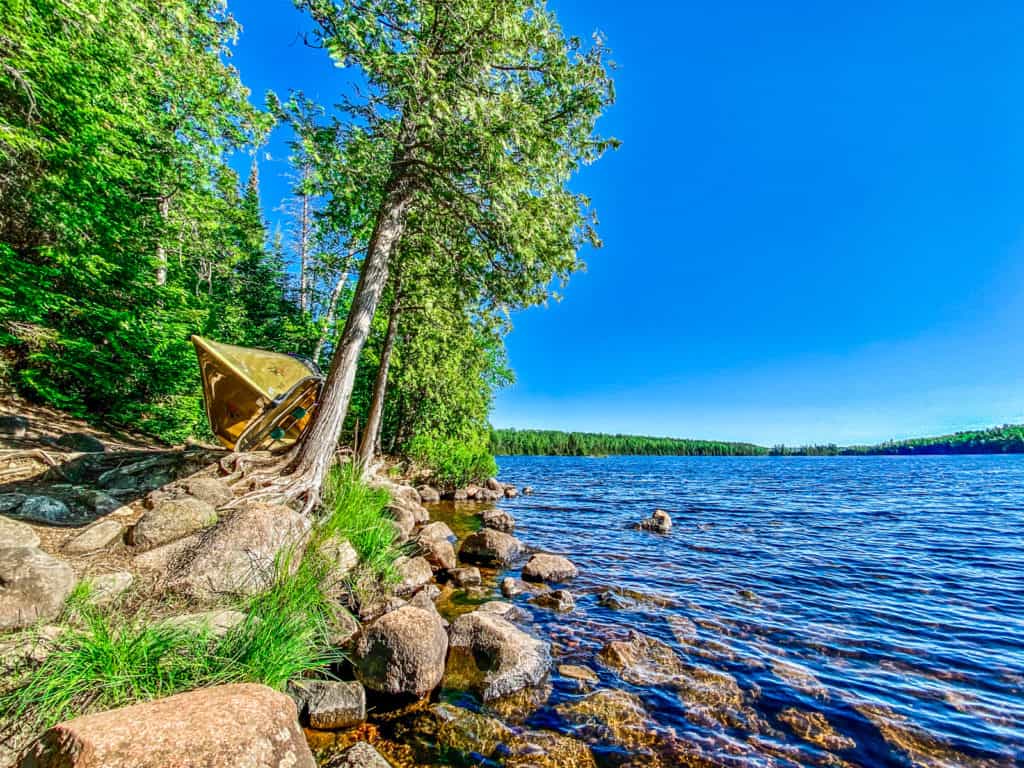
A Beginner’s Guide to the BWCA Routes
Feeling encouraged and ready to trek into the BWCA? Here is a list of our favorite one-lake. short-portage, and extremely-short portage routes with EPs located near a lodge or outfitter. Our guide is only covering Sawbill Trail and Gunflint Trail routes. There are many more that can be accessed via Ely-area entry points. We may include these in the future, but are not familiar enough with them to recommend them.
Getting There
Take turn onto the Sawbill Trail off Highway 61 in the town of Tofte. Continue until it ends. The Sawbill Trail basically ends in the parking lot of Sawbill Canoe Outfitters and the Sawbill Campground.
Outfitter and Pre-Trip Lodging Info
Sawbill Canoe Outfitters has been family owned and operated since 1957. Third-generation owners Clare and Dan Shirley are keeping the family-tradition of helping people enjoy the wilderness. Sawbill is a full service outfitter. They can help you will all of you gear, some of your gear, or just a canoe rental. They do not have an cabin rentals, but the Sawbill Campground is just 100 yards away and a great place to sleep the day before and after your BWCA Trip.
2 to 3 Day One-Lake, No Portage Loop | Sawbill Lake Only | Blue Route on Map
- For those wanting to experience the BWCA without doing any portages.
- Put your boat in at the boat launch near the Sawbill Campground.
- Campsites: 13
- Size: 834 acres with a max depth of 45 feet.
- Paddling a loop around the lake will be a distance of about 2.5 miles.
2 to 4 Day Extremely-Short-Portage Loop: Sawbill to Kelso to Alton | Orange Route on Map
- Cover a greater distance with only three short portages and explore two large lakes and one small lake.
- Put in your boat at the boat launch near the Sawbill Campground.
- Paddle a short way up Sawbill Lake to Kelso River.
- Take the 18.5-rod portage between Sawbill Lake and Kelso River
- Take the Kelso River into Kelso Lake.
- Campsites: 3
- Size: 133 acres with a max depth of 16 feet.
- Paddle down to the southern end of Kelso Lake (do not go back into Kelso River)
- Campsites: 16
- Size: 969 acres with a max depth of 72 feet.
- Midway down Alton Lake, you will find the 28.5-rod portage back to Sawbill Lake.
- Paddling this loop will cover roughly 12 miles of paddling total if you paddle the whole length of Alton and only paddle on Sawbill until Kelso River.
3 to 4 Day Short-Portage Route: Sawbill to Smoke to Burnt to Flame | Green Route on Map
- Cover a greater distance with only three short portages and explore three smaller lakes.
- Paddle about halfway up Sawbill Lake to the Smoke Lake Portage.
- Take the 107-rod portage between Sawbill Lake and Smoke Lake.
- Campsites: 4
- Size: 158 acres with a max depth of 20 feet.
- Things to Do: Go fishing or explore the small inlet on the north end of the lake.
- Paddle straight across Smoke to the Burnt Lake Portage.
- Take the 95-rod portage between Smoke Lake and Burnt Lake.
- Campsites: 6
- Size: 358 acres with a max depth of 23 feet.
- From the Smoke Lake to Burnt Lake portage go north to the Flame Lake portage.
- Take the 59-rod portage between Burnt Lake and Flame Lake.
- Campsites: 1
- Size: 51 acres with a max depth of 22 feet.
- This is not a loop route. You will need to head back to Sawbill via the Flame Lake, Burnt Lake, and Smoke Lake portages.
- Paddling this route will cover roughly 12 miles of paddling total if you do a loop around all three lakes and only paddle on Sawbill until the Smoke Lake portage.
4 to 6 Day Sawbill Adventure | Sawbill to Alton to Kelso to Sawbill to Smoke to Burnt to Flame | Combine Orange and Green Routes on Map
- Combine the three routes above for a longer trip covering a greater area and six great lakes.
- Refer to the routes above. The only adjustment we’d make would be to enter into Sawbill Lake and immediately take the portage into Alton Lake. Then take the portage into Kelso Lake and back down the Kelso River to Sawbill Lake. Essentially reversing the Sawbill – Kelso – Alton loop. Going back into Sawbill Lake from Kelso River puts you closer to the Smoke Lake portage.
- This route gives you many more campsite opportunities. If you are heading out on a busy weekend, you can look for an available campsite mid-Sawbill Lake and use that as your basecamp, doing the Kelso – Alton loop one day and the Smoke – Burnt – Flame route another while keeping your basecamp on Sawbill.
- Depending on how much you explore, you could paddle 25+ miles over the course of your trip.
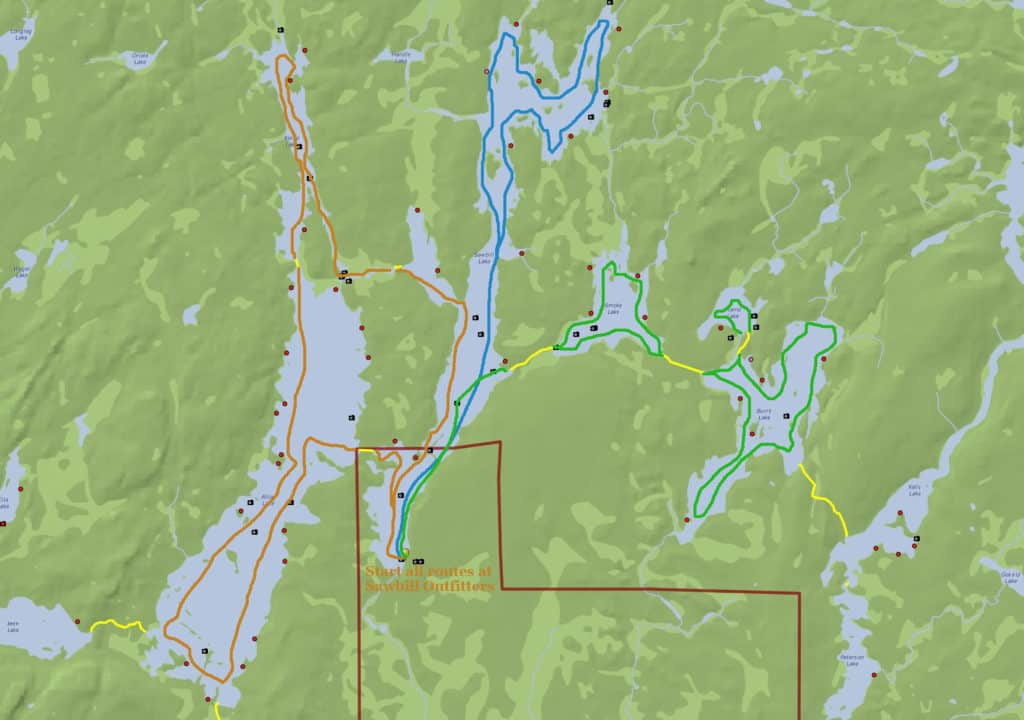
Click here to view full-sized image
Head up the Gunflint Trail from Grand Marais for about 27 miles and turn right on E Bearskin Rd. After 0.7 miles on E Bearskin Road turn right onto Forest Rd. 60.
Bearskin Wilderness Outfitters offer complete or partial outfitting for canoe trips anywhere along the Gunflint Trail and eastern BWCA area. The outfitters is located within the Bearskin Lodge and Resort, which offers a variety of lodging options you can enjoy before and after your BWCA trip. East Bearskin Lake Campground is also nearby.
2 Day Extremely-Short-Portage Loop: East Bearskin to Alder | Dark Orange Route
- For those with limited time to explore, this loop is quick and easy with the two 50-rod portages.
- Launch into East Bearskin Lake and go to the southwestern Alder Lake portage.
- Take the 52-rod portage between East Bearskin Lake and Alder Lake.
- Campsites: 7
- Size: 528 acres with a max depth of 72 feet.
- Head to the northwest inlet of Alder Lake to the take the second 52-rod portage back to East Bearskin Lake.
- If you only paddle from East Bearskin Lake to Alder Lake, and do not portage to any smaller lakes, you will paddle roughly 12 miles total.
Make this route a longer trip by taking the extremely short portages into smaller, nearby lakes like Pierz Lake, Canoe Lake, Paddle Lake, and Crystal Lake. If you cannot find a campsite on Alder there are some on Pierz Lake and Canoe Lake.
There are also several day-trip options such as East Bearskin Lake to Flour Lake to Aspen Lake. The Aspen Lake to East Bearskin Lake portage actually brings you right to Bearskin Lodge and Resort. There are no campgrounds on these lakes and they are not in the BWCA, so they are a day-trip only.
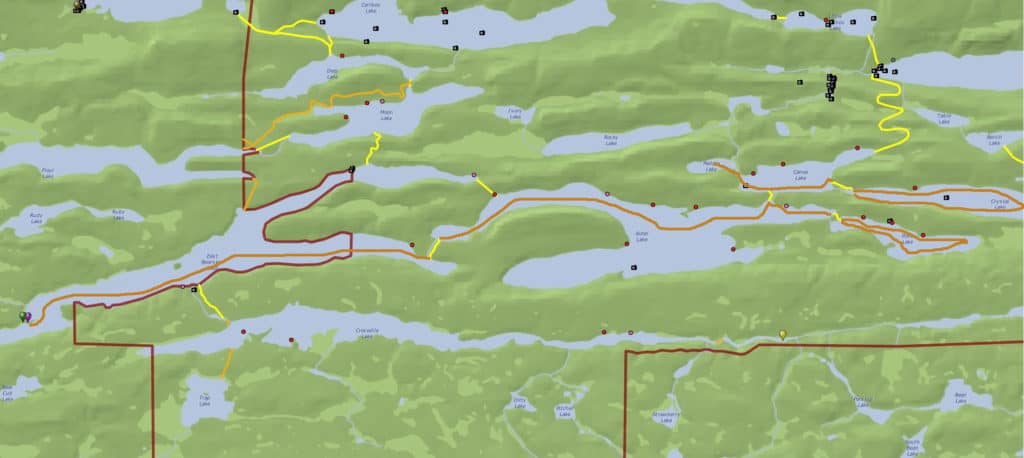
Duncan Lake is accessible through Bearskin Lake. We recommend Hungry Jack Outfitters on Hungry Jack Lake to access Duncan Lake. Take the Gunflint Trail to the mid-trail area. Take a right onto Hungry Jack Road and then stay to the right of the fork to go onto S Hungry Jack Road. Stay on S Hungry Jack Road until the road ends at Hungry Jack Canoe Outfitters. This will take you to Hungry Jack Outfitters where you can portage to EP 60 at Duncan Lake.
You can get closer to the EP by taking the left of the fork to stay on Hungry Jack Road. About 0.7 miles down the road you will see a public parking area on the left side of the road. This will give you access to West Bearskin Lake which is a short trip across the lake to EP 60 at Duncan Lake.
Outfitter and Pre-Trip
Hungry Jack Outfitters is a family-owned and operated currently operated by Dave and Nancy Seaton. Dave and Nancy, and their staff, are a wealth of knowledge about the BWCA. They are a full service outfitter and also have two cozy cabins for rent that you can stay in before and/or after your BWCA trip. Or basecamp from a cabin and day trip into the BWCA.
2 to 4 Day Short Portage Route: Duncan to Rose (Optional: Rat Lake)
- Experience the stairway portage and a beautiful waterfall on this popular route.
- Depart from Hungry Jack Outfitters on Hungry Jack Lake.
- Paddle the short way across Hungry Jack Lake.
- Take the 20-rod portage to Bearksin Lake.
- Paddle to short way across Bearskin Lake.
- Take the 81-rod portage to Duncan Lake.
- Size: 472 acres with a max depth of 130 feet.
- Paddle the long way across Duncan Lake.
- Take the 77-rod portage to Rose Lake. Note: this is the stairway portage.
- Campsites: 8 (all on the US side)
- Size: 628 acres with a max depth of 90 feet.
- Optional: Paddle to the far west side of Rose Lake.
- Take the extremely short 8-rod portage to Rat Lake.
- Campsites: 0
- Size: 15.9 acres with a max depth of 5 feet.
- This is not a loop route. You will need to head back to Rose, Duncan, Bearskin, and Hungry Jack Lakes via the portages to return to the outfitters.
- Paddling this route will cover roughly 18 miles of paddling total if you explore all of Duncan Lake, Rose Lake on the US side, and Rat Lake.
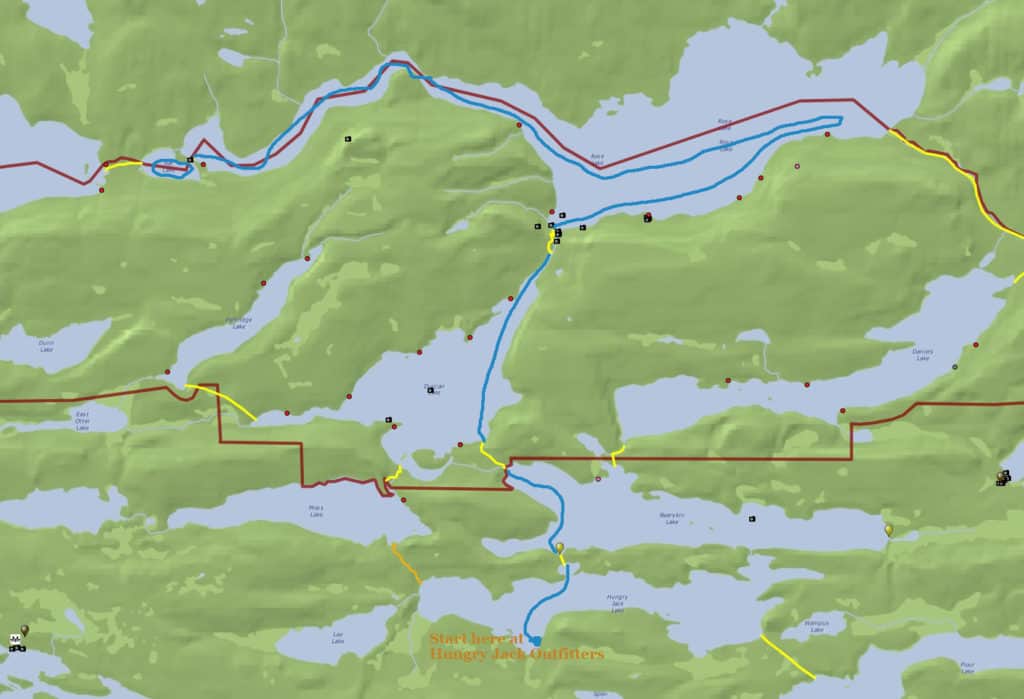
Like Duncan Lake, Lizz Lake is easier to access via another lake that is not in the BWCA: Poplar Lake. We recommend using Rockwood Lodge & Outfitters on Poplar Lake for EP 47 trips. To get to Rockwood Take the Gunflint Trail to the mid-trail area. Turn left onto Rockwood Road.
Rockwood Canoe Outfitters is another family-owned and operated, full-service outfitter. Rockwood is owned by two brothers and their wives who purchased Rockwood in 2015 after having worked at Rockwood several years prior. In addition to providing outfitting services, Rockwood also offers 8 cabins and a bunkhouse for lodging. You can stay at Rockwood before and after your BWCA adventure, or use Rockwood as a basecamp if you don’t want to camp in the BWCA.
2 to 4 Day Short Portage Route: Lizz to Caribou to Horseshoe | Blue Route on Map
- This simple introduction to the southern mid-trail area is great for those just starting out.
- Put in your boat Rockwood Outfitters (alternatively, there is a public launch on Poplar Lake that you can use).
- Paddle across Poplar Lake to EP 47.
- Take the 46-rod portage to Lizz Lake.
- Paddle across Lizz Lake.
- Take the 68-rod portage to Caribou Lake.
- Campsites: 8
- Size: 270.5 acres with a max depth of 26 feet.
- Paddle to the southeast corner of Caribou Lake and take the 22-rod portage to Horseshoe Lake.
- Size: 210 acres with a max depth of 26 feet.
- This is not a loop route. You will need to double back to Caribou and Lizz Lake to return to Poplar Lake.
- Paddling this route, if you explore all of Caribou and Horseshoe Lakes will cover roughly 12 miles total.
5 to 7 Day Loop: Lizz to Caribou to Horseshoe to Gaskin to Henson to Pillsbery to Swallow to Meeds (loop back to Caribou) | Orange Route on Map
- This route has one longer portage (105 rods).
- Start by following the route above (Lizz to Caribou to Horseshoe).
- Paddle to the southwest corner of Horseshoe Lake.
- Take the 98-rod portage to Gaskin Lake.
- Paddle across Gaskin the far west side.
- Campsites: 10
- Size: 427 acres with a max depth of 82 feet
- Take the 91-rod portage to Henson Lake.
- Campsites: 5
- Size: 139 acres with a max depth of 40 feet
- Paddle the short way across Henson Lake.
- Take the 51-rod portage to Pillsbery Lake.
- Campsites: 2
- Size: 75.5 acres with the max depth unknown.
- Paddle across Pillsbery to the north-central side.
- Take the 89-rod portage to Swallow Lake.
- Size: 37 acres with a max depth unknown
- Paddle the short way across Swallow Lake.
- Take the 105-rod portage to Meeds Lake.
- Size: 370 acres with a max depth of 41 feet
- Paddle the long way across Meeds Lake to the eastern side.
- Take 26-rod portage to the into a creek and the 13-rod portage out of the creek to Caribou Lake.
- Paddle across Caribou Lake to the northeast corner to get back to the Lizz Lake Portage.
- This “epic” trip covers 9 lakes and a small creek. You will need to take 11 shorter portages and one longer portage, so only take this route if you enjoy portaging a lot. Be sure to give yourself plenty of time to travel. 5 days is the minimum a beginner will likely be able to do this route, and that’s if you do not take time to explore and just do the route. A week would be best. You will cover about 16 miles on this journey total round trip.
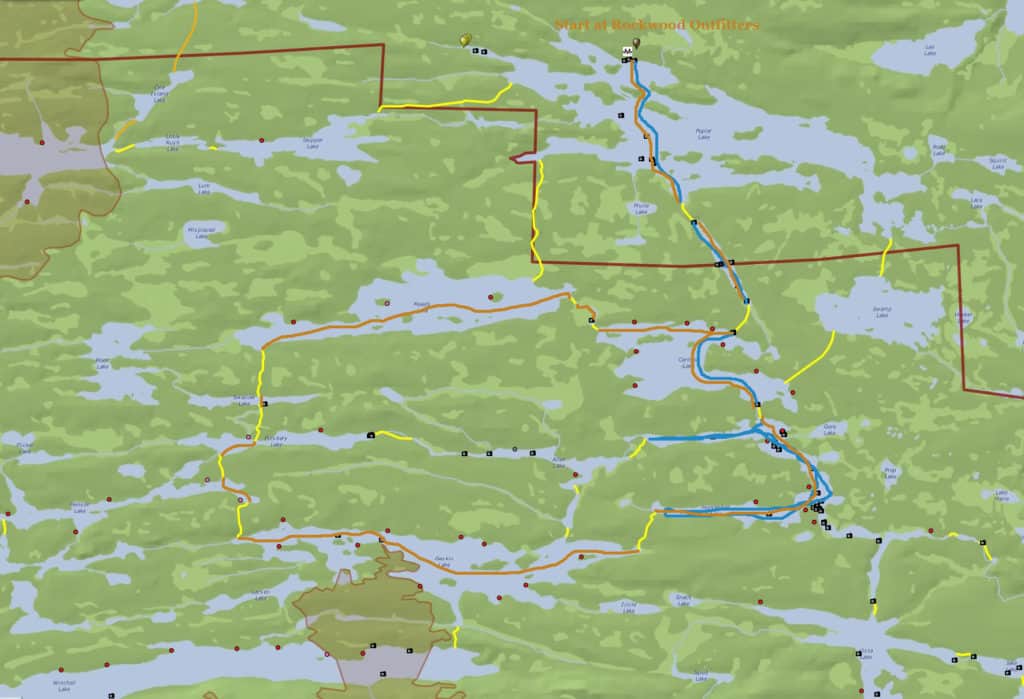
Even though the EP 51 is called Missing Link Lake, you actually enter into Round Lake. From the Gunflint Trail turn left onto Round Lake Road. Continue on Round Lake Road for less than a mile. Round Lake Road dead-ends at Tuscarora Lodge & Canoe Outfitters.
Tuscarora Lodge & Canoe Outfitters is owned by Andy McDonnell and Ada Igoe. Both were born and raised in the Grand Marais area and know the BWCA well. Tuscarora is a full-service outfitter, including having several cabins and lodge rooms for before and after your stay. In addition to being a great outfitter for overnight BWCA trips, Tuscarora would also make a great basecamp for those wanting to just take day trips.
3 to 4 Day Small Lake Route: Round Lake to Gillis Lake | Red Route on Map
- This route has many portages which can be very challenging. Some portages like to flood in the spring. Others include steep inclines. You will also have only 6 campsites you will come across until you reach Gillis Lake! It’s a great route if you want more of a challenge for your first trip.
- Enter Round Lake at EP 51 Missing Link Lake.
- Paddle across Round Lake to the West Round Lake Portage.
- Take the 77-rod portage to West Round Lake.
- Paddle across West Round Lake.
- Take the 46-rod portage to Edith Lake.
- Paddle across Edith Lake.
- Take the 33-rod portage to Brandt Lake (at this point you are in the BWCA).
- Campsites: 3 (all along the north side and the only campsites on this route!)
- Size: 115 Acres with a max depth of 80 feet
- Paddle to the northwest corner of Brandt Lake and take the 88-rod portage to Gotter Lake.
- Paddle to the northwest corner of Gotter Lake and take the 13-rod portage to Flying Lake.
- Paddle about 1/4 of the way up Flying Lake and you will see the portage to Green Lake on the left-hand side of the lake.
- Take the 73-rod portage to Green Lake.
- Paddle straight across Green Lake to the far side.
- Take the 18-rod portage to Bat Lake.
- Size: 83 acres with a max depth of 110 feet.
- Paddle to the southeast corner of Bat Lake and take the 21-rod portage to Gillis Lake.
- Size: 616 acres with a max depth of 180 feet.\
- This is not a loop route. You will need to double back the way you came. (There is a loop if you go from Gillis to Crooked Lake to Owl Lake to Tuscarora to Missing Link Lake back to Round Lake. However, the portage between Tuscarora and Missing Link Lake is over a mile long and very challenging. We do not recommend for your first trip.)
- Paddling this route, if you explore all of Gillis Lake, is about 13.5 miles.
2 to 3 Day Small Lake Route: Stop at Brandt Lake
- Follow the above route, but stop at Brandt Lake. If you can find on of the 3 campsites open, snag it up and use this lake as a basecamp to explore the small lakes nearby. The portages will be less difficult if you do not have all your gear. We put this route second as getting a campsite on Brandt may be difficult. Do not plan to take this route but rather adjust your plans if you can do it.
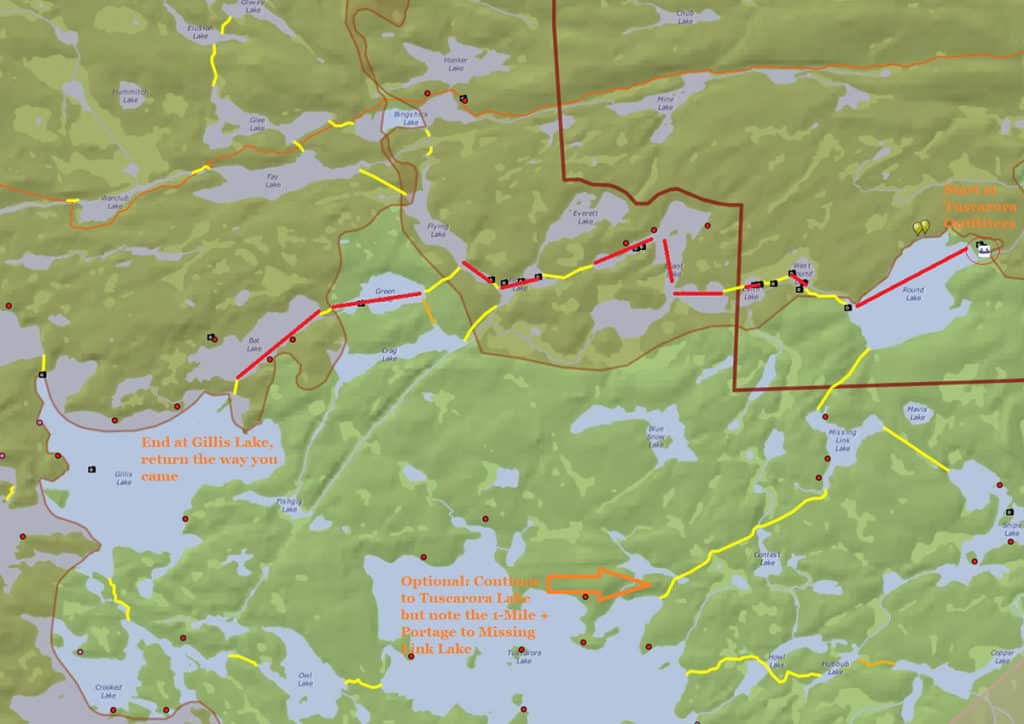
Info Coming Soon

Our Trip Into the BWCA on Exploring the North Shore
You’ve read the guide, now hear all about the trip that (mostly) wrote it! The first time we ventured into the BWCA. This trip marked Martha’s first time going into the BWCA ever! Jaye had ventured into the BWCA on day trips multiple times for the podcast and personal trips. And, one over-night trip as a child under her belt. But, for the most part, both of us were very much beginner travelers into the BWCA.
We went did an outfitting package through Sawbill Canoe Outfitters and set out at EP 38: Sawbill Lake for our trip. We planned to do an extremely-small portage, 2-night trip that turned into a one-lake trip due to inclement weather and Martha having a migraine on the first day. From this trip we learned some valuable lessons and are planning a longer trip later in the summer.
Our BWCA trip occurred in June of 2020. During this time the COVID-19 Pandemic was affecting many things related to travel within the BWCA. It was also just a couple of weeks after the George Floyd murder in Minneapolis that sparked worldwide Black Lives Matter protests. We discuss these two events and how they affected our trip. Note that when you make your first trip into the BWCA may mean some processes and experiences will be different than ours.
Watch Our BWCA Video (During Covid)
Bwca gallery.
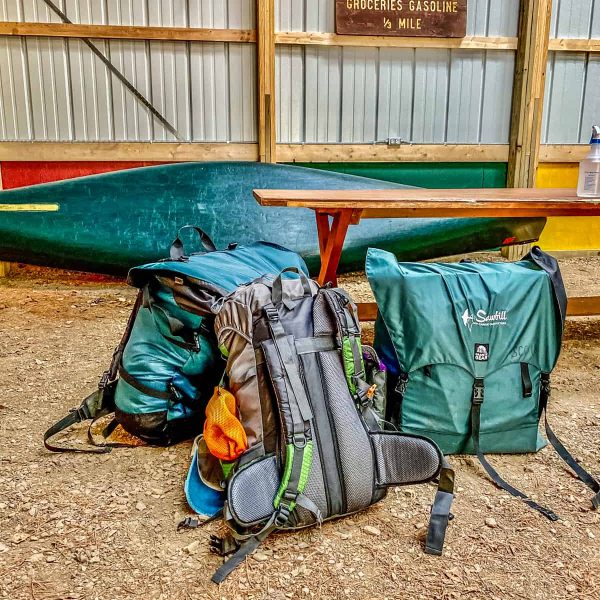
How to Plan a Trip to the Boundary Waters Canoe Area (for Beginners)

Minnesota’s Best Kept Secret
The Boundary Waters Canoe Area in northern Minnesota is an oasis of more than one million acres of untouched, beautifully preserved lakes and trees. It’s home to more than fifty species including black bears, otters, bald eagles, wolves, walleye, pike, loons, bobcats, and more. No motorized boats are allowed, making it a quiet place where adventure seekers travel by canoeing, and portaging. It’s certainly unlike any place I’ve ever been, and I already can’t wait to go back. Read on for how to plan an amazing trip, find an outfitter, determine the best entry point and get a permit, what to pack (and what to leave behind), and more for your trip to the Boundary Waters Canoe Area.

1. Working with Tuscarora Outfitters
An outfitter can make your experience in the Boundary Waters Canoe Area stress-free, whether you’re a beginner or have been many times. For our trip, I partnered with Tuscarora Canoe Outfitters . Co-owners, and husband and wife, Andy and Ada, helped us with our trip in several essential ways.
Tuscarora Outfitters obtained our permit and recommended the best locations for an entry point, campsites with sunset views, and best routes for fishing, and provided general advice on where to go (or not go) based on current conditions. They also provided us with equipment. There are several options for rental packages with Tuscarora Outfitters. The information on their website lists out exactly what is included in the equipment package and the food package. You can also rent individual items each day, like a tent, saw, or stove.

2. What to Pack (and What to Leave Behind)
We had a group of four people with a variety of skills and experience. We partnered with Tuscarora Outfitters for their Equipment and Canoe Package for two people, which includes a canoe, lake-safe dish soap, plates, cups, utensils, a water filter, life jackets, a tent, sleeping bags, chairs, a percolator, water bottles, and more. We also brought a few of our own items like a second canoe, sharp knives, fishing rods, and bait, and other miscellaneous items like headlamps, and hammocks.
It’s important to not overpack. You’ll be canoeing and portaging with a lot of bags, which can quickly weigh you down. Make sure you really consider what you need, don’t overpack equipment, food, or clothing, and be sure you know what other people in your group are bringing to eliminate duplicates.

3. Meal Planning
Figuring out what food to bring, especially during summer’s heat, can be tricky. Glass and cans are not allowed, and there is no easy way to keep things cold after the first day, beyond keeping items in the shade. A few tips include bringing pre-cooked rice and beans in plastic packets, hard cheese and summer sausage that won’t spoil easily (if left in the shade), bagels or English muffins, precooked bacon, and sausage that only needs to be reheated, and peanut butter and jelly in plastic jars.
For our first dinner, we had a chicken curry dish with rice, pita bread, and green beans. The raw chicken breast was sliced into small bite-sized pieces prior to our trip, so it cooked quickly and easily and didn’t require much clean-up. We also made bean and rice tacos (we hoped to make fish tacos but unfortunately didn’t catch any fish that day). You’ll also want to bring a lot of snacks, like nuts, granola bars, and peanut butter, all items that are easy to munch on, won’t melt, and can be a good backup plan while you’re out canoeing and portaging all day.

4. What to do in the BWCA
There is so much to do in BWCA, no matter the season. You can spend a whole day canoeing and portaging from one lake to another. You can also fish from your campsite or from your canoe (or ice fish in the winter). Jump in the lake and swim, swing around on a hammock, or read a book by the campfire. There isn’t a lot of hiking in the BWCA since it’s mostly tiny islands, but we did check out the Palisades, which is a five-minute steep walk up to the top of an overlook with an incredible view. You definitely won’t be bored!

5. Other Tips and Advice
Planning a trip to the Boundary Waters Canoe Area can be intimidating. It requires extensive research and planning. I highly recommend you go with someone who’s been before if it’s your first time. Read on for a few other helpful tips.
- Get your permit early: There is a limited number of permits allowed in the BWCA each day, and the size of your group is also limited. Plan your trip in advance and secure your permit early.
- Be bear aware: Understand that you may encounter wildlife during your trip. Be smart and prepared. Bring bear spray and bear-proof food packs. Make sure you know what to do if you encounter a bear or other predator during your trip.
- Bring waterproof maps and a compass: You won’t have reliable cell service so download maps ahead of time for offline use on Google Maps or Navionics. And in case y our battery dies, bring paper maps in waterproof cases, and definitely bring a compass!
- Leave no trace: Be respectful of the land, water, and animals around you. Don’t dump dirty dishwater into the lake, take all of your garbage with you and if you see any trash while there, take it out of the BWCA with you.
- Get ready for bugs: If you go during summer, there will be mosquitos and lots of other bugs! Bring bug spray, and a mosquito net, and check for ticks.
- Prepare for the elements: You never know what the weather may be and how it may change throughout the day while you are far from camp. Pack layers, waterproof gear, dry bags for cameras, and other expensive equipment. Pack sunglasses, sunscreen, and a few extra socks in case they get wet.
- Have an emergency plan: In case of an emergency, whether it’s a storm or an injury, have a plan on what you’ll do to get help. Know where the nearest hospital is, bring a first aid kit, and let a few family members or friends know where you’re headed.
Shop some of my favorite items
Merrell boots, hiking socks, women’s sandals.

An Incredible Trip
This experience was incredible. Being in nature is always wonderful, but being in such a remote, pristine and seemingly untouched landscape is simply awe-inspiring. While on our trip, I kept thinking about the John Muir quote, “Into the forest I go, to lose my mind and find my soul.” There is no doubt that I want to return to the BWCA, and I hope it’s soon!
For more Northern Minnesota inspiration, check out my blog posts on Duluth , Grand Marais , Cook County , 9 Epic State Parks Along the North Shore , and the 20 Must-See Spots Along the North Shore !

You May Also Like

Unique Things to Do in Blue Earth for One Day

Best Twin Cities Patios for Heated Outdoor Dining

Top 5 Minnesota Winter Destinations
Leave a reply cancel reply.
Your email address will not be published. Required fields are marked *
Save my name, email, and website in this browser for the next time I comment.
Notify me of follow-up comments by email.
Notify me of new posts by email.
Call us: 218-365-5581
Tips on Entry Points: BWCA and Quetico Canoe Trips
Tips on entry points, for bwca and quetico park canoe trips.
Our primary service is to help you choose an entry and plan a route. We do this based on party make-up, previous experience desire for solitude, trip interests, and length of trip. Please phone us to discuss trip ideas. Entry points should be thought of as the small end of a funnel. Each day a limited number of parties may enter through that “funnel”. The farther out they travel, the fewer other parties they will encounter.
If an entry point has a low quota (1-4 parties per day), dispersal happens relatively quickly. When starting from heavy use entry points with large quotas (14-27 parties per day), it will probably take a few days of traveling before the “crowd” thins out. In most cases, these heavier use areas are the easier routes to travel … they have fewer portages, and usually they are short. There are a few low quota entry points that lead toward routes with only a few short portages, but these are exceptions. Don’t get too hung upon portages, though; roughly 80% of the portages in the BWCA are less than 1/4 mile in length.
The intent of this information is to introduce you to the various locations from which your travel group may start your trip. We would hope that you do not treat this listing as a catalog from which to choose a particular location. Instead, pick out an two or three entries that sound good to you and let us know why you think they would be a good match for your group. This will help us understand what you are thinking and be more accurate in applying for your permits.
If your group has been to the North Country before on a canoe trip, you may already have a favorite entry point. But if this is your first trip, or if you are just looking for a chance to consider something new, the following is our synopsis of each of the major Entry Points in the Ely area.
BWCA Entry Points
Click each line for a drop down with more information.
#4 - Crab Lake - 4 Parties Daily - Paddle Only
An area rarely mentioned in guide books, the Crab/Cummings series of lakes is one of those “best kept secret” type of canoe routes. It is an excellent entry for a fishing base camp trip utilizing only one or two campsites over the course of your journey. Though it is one of the canoe country’s best areas for smallmouth bass, side trips can lead to lakes with above average walleye and pike fishing, as well as largemouth bass (which is very rare in northern Minnesota). One rolling portage of a mile and a quarter is required on both the first and last day to access and leave through this Entry Point. This is the primary reason many parties avoid this area. This is to your strong advantage as there are many portages, half as long, that are much “tougher” to get across due to terrain changes along the way. Exit Location: #4 (only), van trip needed.
#14 – Little Indian Sioux River – 6 Parties Daily Paddle Only (for most routes)
A distant starting location from our base, Indian Sioux can provide great fishing along with a high degree of solitude for those paddlers willing to travel daily and carry some longer than average portages. A scenic highlight is Devil’s Cascade: a deep gorge with the Indian Sioux River spilling from one level to the next for several hundred yards. Exit Locations: #14, or 16 (5-8 days). Van trips required at start and end.
#16 - Nina Moose River (North) – 7 Parties Daily – Paddle Only
A distant starting location from our base, Nina-Moose River can provide great fishing along with a moderate degree of solitude for those paddlers willing to travel. The portages are average in difficulty, but one not need to do very many to get to a good spot for base camping the middle 3 days or so. Scenic highlights are Rebecca Falls, Curtain Falls, and the pictographs on Lac La Croix. The area, or associated routes, would be on Border Lakes with Canada being about half way across Lac La Croix and/or Crooked Lakes — touching Canada is OK for paddling and lunch, but not for camping or fishing. Exit Locations: #16 can be any degree of difficulty you choose (and can be adjusted while you are out there), 22/23 can be used with a good deal of travel, or 14 can be used with long portages and few people. Van trips required at start and end.
#19 – Stuart River – 1 Parties Daily – Paddle Only
A challenging start to this entry is the 480 rod (1 ½ mile) portage from the parking lot. The Stuart River meanders past some small shallow lakes (northern pike), eventually reaching Stuart Lake on the second day. This fantastic walleye lake is seldom fished due to the difficult route to reach it. Parties then can continue on to Iron Lake and Crooked Lake for smallmouth bass. Exit Locations: #16 or 22, van trip needed. We don’t recommend returning to the starting location due to the difficulty of the route.
#20 – Angleworm Lake – 2 Parties Daily – Paddle Only
A beautiful lake reached by an initial 2 mile portage. We think this one is better left to those people trying to reserving their permit after everything else is taken. Or (said differently) if you insist on starting here, use another outfitter … you probably aren’t going to be happy with the trip … and we don’t want to be blamed!
#22 or 23 – Mudro Lake – 8 Parties Daily – Paddle Only
This entry gets booked-up very quickly because of its scenic beauty and fantastic fishing. Routes start at the end of an old logging road from a private landing adjacent to the locally colorful “Chainsaw Sisters Saloon”. Portaging into Horse or Fourtown Lake can find the base camping unit at their campsite by noon. For those wanting to continue, a chain of small lakes to the northwest leads to quiet walleye and northern fishing. Parties may also paddle the Horse River up to the its’ confluence with the Basswood River which forms a section of the Canadian Border. Another mile, and paddlers can gaze at some very clear pictographs adorning a cliff face along the river. Groups may then work the border lakes heading north, then west, and finally south to exit at Nina Moose River (the reverse route listed above: 6-7 days). Traveling to the southeast will return parties via Fall Lake to our dock on White Iron Lake (6-7 days).
#24 – Fall Lake – 14 Parties Daily – Motorboats Allowed
Used primarily by resort guests with motorboats and base camping canoe parties wanting to get to Basswood Lake’s Jackfish and Pipestone Bays. Excellent walleye fishing in May and early June. Exit Locations: 22, 25, or 26 via van, or 31 via paddle-in to base.
#25 – Moose Lake – 27 Parties Daily – Motorboats Allowed
Moose Lake is without question the most popular starting point in the Boundary Waters. When we are talking to people at random at our winter sport shows over the winter, invariably almost all who say they’ve been to the BWCA say they went out of Moose Lake. It is one of the easiest routes to paddle as the portages along the border are short. After a day or two of travel, routes can lead to some very good fishing for all four of our major species: walleye, smallmouth, northern pike, and lake trout.Showing up in every guide book on the area, and having by far the largest daily use quota, it is certainly understandable why Moose Lake is referred to by some Sierra Club members as “The Canoe Highway”. In addition to the above quota for US-side canoe camping, 15 more canoe parties start here for heading up to Prairie Portage for Quetico Park trips. There is also an average quota of 16 motorboat parties coming from the numerous resorts and summer homes located on the lake. Additional motor use comes from the quota-free motor towboat shuttles transporting parties up the first 6 miles of the chain. That adds up to a whole lot of people. For this reason we seldom recommend Moose Lake for a starting point for US-sidetrips.All routes leading from Moose Lake were hit very hard during 1999’s Independence Day wind storm.If your group has the time to push deeper into the woods, and doesn’t mind two days in a high density area, Moose Lake can offer some good routes for 50-Miler seekers. Exit Locations: # 22, 24, 25, 26, 28, or 30, via van, or 31 via paddle-in to base.
#27- Snowbank Lake – 8 Parties Daily – Motorboats Allowed
A large lake best traveled in the morning. Easy portages (though sometimes a little long), lead into the areas between Moose Lake and Lake One … the first and second busiest entry points in the BWCA. These smaller lakes hold healthy habitats of walleye and northern pike. While a little heavy on people throughout most of the connecting routes, it is a pleasant area to paddle through. Due to the expanse of Snowbank Lake, exiting parties may get stranded 1½ miles out when afternoon winds pick up from the west. Exit Locations: #25, 29, or 30 via van, or 31 via paddle-in to base.
#28 – Wood Lake – 2 Parties Daily – Paddle Only
Lightly used set of lakes with good fishing. Good for a younger group that wants to base camp. Route may be extended out onto Basswood Lake (however we don’t usually recommend it for canoe travel due to its large size). Fisher Maps: F-9, 10, 17, 3. Exit Locations: # 22, 24, 25, 26, or 28, via van, or 31 via paddle-in to base.
#29 – Ojibway Lake – 1 Party Daily – Paddle Only
Un-officially known as “North Kawishiwi”. This entry is a unique way to enter the Kawishiwi River flowage with your route being almost identical to one starting at Lake One (but without the people). The one-of-a-kind “roller portage” is modeled after 19th century logging shoots; your canoe slides across the portage on rollers! Unfortunately, the next portage is about 1/2 mile and has no rollers. With these two land crossings out of the way, you can be in your first campsite by noon. The remainder of the trip can be done with one or two camps allowing for day-trips, or you can poke into some very lightly used lakes for real solitude. There is a great brook trout lake nearby, and a beautiful cascade which your outfitter can direct you to. Exit Locations: #30, 32, or 33 via van, or 31 via paddle-in to base.
#30 – Lake One – 18 Parties Daily – Paddle Only
This is the second busiest entry in the BWCA. But unlike Moose Lake, there are several routes which branch away directly from the landing, or within an hour’s paddle, which can lead your party into lakes and rivers having more solitude. Also, it is probably the easiest chain of lakes to paddle which does not have motorboat traffic. Heading east will take your party through Lakes Two, Three, Four, Hudson, and into Insula. The fishing is great on this string into mid-July. From Insula, you may journey deep into the heart of the BWCA and then return to Lake One for a van pick-up. Or continue north and west on a popular route returning to Moose Lake for a 50-mile trip. Heading west from the landing will take your party into the Kawishiwi River system. These smaller lakes and the river (which is better described as a long narrow lake itself) have very good fishing for walleye and pike. Most of the portages are short, with only one 1/4- to 1/2-miler per day. Several routes are available here, all leading back to our White Iron Lake base location. This gives the flexibility to end your trip at any time on your last day without having to meet our van for a scheduled pick-up. Exit Locations: #22, 25, or 27 via van, or 31 via paddle-in to base.
#31 – Farm Lake – 3 Parties Daily – Paddle Only
Better described as the “western entry of the Kawishiwi River flowage.” This entry is the closest to our White Iron Lake Base, being only a 2-mile paddle from our dock. Many of our groups opt for this light use entry, as there is no van transportation needed. In addition, most of our parties exit the BWCA via this point so as to paddle-in on the last day on their own time schedule. The routes leading from Farm Lake are on smaller, wind/wave protected lakes, making this area good for both first timers or parties with younger members. Easy, slow-paced base camp routes are as simple to map out as longer, traveling trips for those in better shape. These routes can lead to fantastic walleye and pike fishing, along with smallmouth bass and crappie, too. For those heading to the southeast, moose and eagles will probably be sighted. There are very few bears in this area to get into poorly hung food packs at night (black bears are drawn to where people are most frequently camped). The area hold several of the BWCA’s wolf packs, so there is a good possibility that you might hear them howling. Wolves are timid around humans, though, avoiding camps and most portages. The chance of seeing a wolf is rare . . . but it does happen once-in-a-while for groups that are lucky (and very quiet). Exit Locations: # 25, 27, 29, 30, 32, or 33 via van, or return via paddle-in to base.* NOTE:A separate lake (South Farm) shares the Farm Lake Entry Quota with the North Kawishiwi River. South Farm is an isolated, motor-use lake. Canoe parties leaving from, or returning to, our North Country base docks never use the motorized South Farm Lake (unless they are REALLY lost).
#32 – South Kawishiwi River – 2 Parties Daily – Paddle Only
We use this entry to provide essentially the same trip as those starting from our dock when the limited number of Farm Lake permits are booked-up. The first day differs in that you are paddling the scenic South Kawishiwi River, past some very pretty rapids, and some great walleye fishing spots. The van trip to the landing is only about 15 minutes. Exit Locations: #29, 30, or 33 via van, or 31 via paddle-in to base.
#33 – Little Gabbro Lake – 2 Parties Daily – Paddle Only
One long portage (1/2 mile) leads from the end of the road down hill to a small, pretty, northern pike lake. From here, a short paddle can find you base camped on Gabbro Lake, fishing for walleye, or exploring an old logging dam site. A “lift-over” portage will have your group in Bald Eagle Lake for some battles with smallmouth bass, northerns, and walleye, and camping at some lovely campsites. For those wanting to push a little harder, a series of back lakes provide solitude camping and good fishing. Parties may return to the Little Gabbro Landing for pick-up, or get back to our dock with a day-and-a-half paddle. May and June (and some in July) report seeing not only a moose or two along the shorelines, but also wolf tracks on the portages. The river is also home to beaver, otter and mink. A 2-day paddle will have you on Bald Eagle Lake. Like the Little Gabbro routes, you can stay here for a night or two, push back into the remote back lakes, or continue on to the Kawishiwi River and return to our docks on White Iron. Exit Locations: # 29, 30, or 32 via van, or 31 via paddle-in to base.
#34 & #35 Island River & Isabella Lake – 3 Parties Daily – Paddle Only
These entries were heavily affected by the 2011 Pagami Creek Fire. We now only recommend them for parties particularly interested in FIre Ecology. If you have an interest in this area, please call our office, and we can discuss it in detail.
#75 – Little Isabella River – 1 Party Daily – Paddle Only
A very remote entry point which leads to the mid-point of the Isabella River (see below). Because it is so lightly used, wildlife is in good supply: moose, deer, beavers, otters, owls, etc. The short portages, and narrow, winding river make it a gentle start for younger groups. Routes would normally lead thru Bald Eagle and Gabbro Lakes, and then possibly into the to the North/South Kawishiwi River System and back to our dock. Exit Locations: #29, 30, 32, or 33, or 31 via paddle-in to base
#84 – Snake River – 1 Party Daily – Paddle Only
We use this entry as a back-up when other permits are not available for a particular date. The good news is that it is the shortest paddle route into Bald Eagle Lake . . . the bad news is that it has a long portage at the beginning, and is susceptible to low water conditions.
Quetico Park Entry Guide
All paddle-in canoe trips going into Quetico Park from the Ely area funnel through Prairie Portage on the extreme eastern end of Basswood Lake.
CARP LAKE – 2 Parties Daily
A variety of different distance trips can start through this entry. It is a great entry point for short duration or distance trips, as well as being ideal for longer trips where fishing is paramount. Therefore, it is ideal for a group that wants to base camp at only one site, wants three sites for some variety, or has the time to knock out a vary remote 50-, 60-, or 70-mile trip. It is difficult, however to have a good route with four or five campsites. Portages are generally on the mid-length side, but the majority are over easier terrain than most Canadian portages. It is consistently an above average locale for fishermen seeking mid-summer smallmouth bass or lake trout.
AGNES LAKE – 7 Parties Daily
Probably the best known of the Canadian canoe routes, trips into Agnes have the added reward of Louisa Falls. This cascade drops some 90′ in two sections with a natural “spa type pool” half way down. Pretty good walleye fishing can be had in the area. Returns can be made through the “S-Chain” which is a gorgeous string of crystal clear lakes connected by shorter length portages. Also, for those parties wanting to base camp on the Canadian side of Basswood Lake (i.e.: North Bay), an “Agnes – Base Camp” permit must be reserved.
KAHSHAHPIWI LAKE: 2 Parties Daily
Probably the most remote of the Canadian Entries thru Prairie Portage, “Kash” requires a pretty tough second day to get into the lake. After crossing the “Yum Yum Portage” (acknowledged as one of the hardest in the canoe country) you are home free. There is an alternative route to by-pass Yum Yum that we can tell you about during the mapping session. This long narrow lake has some great fishing for walleye, with some fantastic lake trout spots in the area as well. Bordered with cliffs, some up to 250′ high, this was the home of the last ranger within the interior of the park. The former site now is a nice spot to camp.
SARAH LAKE – 2 Parties Daily
It takes most groups 2 days to get into Sarah, but except for the very last portage, it is a pretty easy trip. Sarah, along with neighboring Tuck, Robinson, and McIntyre provide a wide variety of fishing opportunities for smallmouth, walleye, northerns, and lake trout. Routes through Sarah can be modified to handle any length trip from 5 to 10 days. A nice bonus for this area is that you can exit through Mudro Lake, and not have to retrace your path across North or Bailey Bays, while also avoiding a second trip on the busy Moose Lake Chain.
BASSWOOD RIVER – 2 Parties Daily
Entry into the Basswood River is made via Basswood Lake. This 20-mile (+) lake can get very choppy in windy conditions. For this reason, we do not recommend youth groups use this entry point. Exiting through Basswood River, however, can make for a nice ending for 6 to 7-day paddle-in trips heading through Sarah Lake. To use this exit route, a BWCA permit should also be secured to allow camping the last night on Horse or Fourtown Lake, just prior to your pick-up at Mudro Lake.
10 Tips for a Successful BWCA Trip with Kids
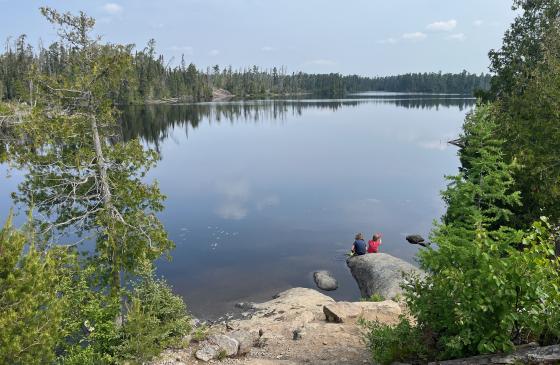
The Boundary Waters Canoe Area Wilderness is the perfect place to teach young kids to love and cherish our wilderness areas. Are we biased? Maybe a little. We have spent our entire lives exploring the nooks and crannies of canoe country, with and without kids.
I did so as a young and rambunctious Boy Scout and was fortunate enough to have excellent mentors along the way. My wife’s family is from Tower, had a place on Lake Vermillion, and took her on trips from a very young age. Our kids, now six and nine, have been coming since the youngest was three.
We’ve all heard it before: the youth are our future. If we are to have a lasting impact in protecting the pristine waters and wilderness mystique of Northern Minnesota, then we need to get more youth involved. We can do so through organizations like the Boy Scouts of America, camps like YMCA Camp Menogyn, or by stepping up and teaching the kids in our life to love and respect this sacred place.
In this article, our goal is to arm you with the basic skills necessary to take that next step and bring your little ones along. What you will learn is that it is not as difficult or stressful as it might seem, as long as you have the right expectations, basic skills, and, most importantly, the right attitude.
Enough about us, let’s dive into some of the tools we use for successful trips with our kids.
Set Realistic Expectations:
Kids will change your trip. It is just how it is. If you go into the experience expecting to cover the same amount of ground as you do with adults, you are guaranteed to be disappointed! If you are uncomfortable sitting around at camp untangling fishing lines and wading into the rocks to remove snags, then ditto.
But, if you can set realistic expectations, then I guarantee you are going to have an unforgettable trip!
Our first trip was out of Kawishiwi Lake, Entry Point #37. You can read all about that trip on our blog, From Tent To Takeoff , or in the Summer, 2023 issue of Boundary Waters Journal . It was short, both in terms of time and mileage, but just might have been our best trip ever.
What helped was that we set very basic expectations for how much we would accomplish as paddlers. Our focus was on keeping the kids active, happy, and safe.
That first trip had one goal: for the kids to want to come back. And we succeeded! Every year we take a similar trip from the same entry point. The only difference is that we have expanded it to now be a full nine days and to cover more mileage than we used to as adults!
Plan Carefully:
We are guilty of lax planning for many of our adult-only trips. We rarely give it much thought outside of picking an entry point and packing some food. This does not work with kids.
Lay out your maps and plan out a REASONABLE route. Then plan out a shorter back-up route. Look for options ahead of time in case your preferred site is taken or favorite lake is full.
Plan for snacks and meal breaks. Yes, adults can just power through. We can skip meals and still get by. Kids can’t. Skip a meal or snack break and you’re bound to regret it.
If you know you will be portaging around waterfalls or rapids, plan in some time to stop and play. Give the kids something to look forward to. We all work better when motivated by a goal and kids are no different!
Pack Extra Food:
Our food barrel for a nine-day trip weights over 60 lbs. Is it a lot? Yes. Do we eat it all? Rarely. But someday we might.
Kids are inherently picky eaters. Some days our kids love mac and cheese. Others you would think we’re feeding them arsenic.
Test your food beforehand and involve them in the process. A couple of years ago we bought literally every bag of freeze-dried food on the market. We ate them while camping. We ate them at home. We tried all of them.
It was an expensive process, but in the end the kids picked out food that they wanted to eat. They settled on three meals from an initial list of over 20. But they eat them, usually without complaining, and are full and ready for each day.
You also need to pack plenty of snacks. Unfortunately, these aren’t freeze dried and weigh a ton, but they will save you in the end. We pack the same snacks they eat at school because we know they like them and often can buy them in bulk at Costco.
Plan Simple Meals:
On a similar note, plan simple and quick meals. We have never been the gourmet BWCA type. We like to focus our time and energy on enjoying the wilderness, not cooking. This is especially true with kids.
Meals should be simple and should not take longer than 15 minutes to prepare. Once kids are hungry, it is too late. The clock is ticking and bad things are bound to come. As parents and wilderness mentors, we need to anticipate the ”hangries” and get in front of them. The closest we ever get to true cooking is eggs and bacon on mornings 1 and 2. After that, it’s PB&Js and freeze-dried meals.
For dessert, we bring a bag of candy. We’ve had too many instances of kids thinking they’ll love a freeze-dried dessert, only to change their minds later. Gum, suckers, and s’mores are our staples.
Speaking of s’mores, leave the graham crackers at home. We bring Oreo cookies and marshmallows. The Oreos rarely break into tiny pieces in transit, and there is no chocolate to melt all over the food barrel. They are quick, easy, and close enough to the real thing!
Pack Intentionally:
We’re not talking minimalism here. Remember, there are kids in that canoe! What we are talking about is only bringing gear that serves a purpose. Think of it as the middle ground between packing for a Superior Hiking Trail through-hike and car camping at Tettegouche.
For long trips, we pack one large food barrel that includes food, our Jetboil, and bowls/cups/etc,. Then we pack two Cooke Custom Sewing Pioneer (medium) packs with everything else. We use compression sacks to help save space and try to think through each piece of gear.
We do not bring hammocks, bug tents, coolers, chairs (apart from our canoe seats), or anything else that is not a necessity. If you start your kids off with the basics, then that is all they’ll know and they’ll build the skills to survive, and thrive, with just that.
If you are looking for more specifics on exactly what we pack, feel free to send us an email or message us on social media. We’d be happy to share our list.
Try to Single Portage
I know this sounds crazy, but do your best to pack in a way that allows for single portaging. It will mean you leave more at home and that you have some rough hikes, but it is well worth it.
We have found that if we double portage, the kids get restless after a while and either follow us around complaining or get eaten alive by mosquitos as they pout at the water's edge.
Single portaging keeps up the pace and provides a good balance of paddle time to hiking time. Too much of either is not good!
Also, along the same lines, we plan our trips with alternating work/rest days. We’ll work really hard on day 1, then stay at the same site and hang out on day 2. Work hard on day 3, then rest on day 4. Rinse and repeat.
We find that we can push the kids further on the work days and get deeper into the wilderness. Then they are so wiped that behavior on the rest of the days is awesome and we’re able to enjoy good amounts of fishing, swimming, and general kid-friendly fun and games.
Prioritize Safety
No, you should not prioritize safety any more when canoe tripping with kids. It should always be top of mind when you are away from civilization. That being said, there are a couple of things we do differently with kids.
First, we do not bring an ax or hatchet on our trips. The four of us sat in on a backcountry blade safety course put on by Jason Gustafson of Lester River Bushcraft a couple of years ago at the annual Winter Camping Symposium . The class was a fountain of knowledge, but the main takeaway was that they are not worth the risk, especially hatchets.
The likelihood of injury is infinitely greater due to the arch of the swing and the possibility that the blade is deflected… into your shins or feet. We bring a folding saw and a large knife.
Most BWCA wood is less than wrist size and does not need to be split. If needed, Jason taught us safe ways to split wood with a sharp knife and a stick. Frankly speaking we’ve never had to use it. Plus, it saves on weight.
We also bring a Personal Locator Beacon and a weather radio. We know a lot of folks love their Garmin Inreach Satellite Communicators and the next paragraph is going to stir up some controversy.
We see the value, but really do not want to be connected to the outside world on our trips. It is one of the main reasons we go. We also have a no-gadgets rule when we camp, which we feel we need to respect if we are going to impose it on the kids.
The Personal Locator Beacon can get us help when needed and is a good reminder to us that we need basic backcountry first aid knowledge for injuries that might not require a liftout.
We check in daily with our weather radio so we understand what could be coming our way. The information we receive on our daily check-ins often informs which campsites we choose and where we put up our tent. The added vigilance has kept us safe on more than one occasion.
Know When to Call it Off
Sometimes it is time to pack up your toys and go home. Maybe someone is sick or something just doesn’t feel right. Sometimes you are on your last night and severe weather is coming through the area. Whatever the reason, it is OK if your trip doesn't end up being as long as you had planned.
Twice we have cut a day off of our trips due to inclement weather. Our number one goal is to make sure the kids are excited to come back next year. If that means bailing a day early and swimming at the AmericInn, then so be it.
The last thing you want to do is force them through a situation that they are not physically or emotionally ready for. Ease into your adventures so you can build the right level of skill and resilience in those little minds.
Eventually, you will be stuck in a difficult situation that you cannot escape. Hopefully by then you will have built the skills to get through it safely, and as a family.
Teach your kids proper etiquette, both on and off the water
We’ve all seen groups come through breaking the unwritten rules of canoe country exploration. They crowd around at portages, leave garbage at campsites, or scream and holler until the early hours of the morning.
Don’t be them. And please don’t create new ones! Walk through what the trip is going to look like over dinner prior to leaving. Explain what a portage is and what it will look like. Set expectations for proper behavior, voice levels, etc.
Help them to understand why it is important to spread out at portages and why they should move gear to the side so it is out of the way. Explain that the canoe carrier has right-of-way and why they may be gritting it out and not paying very close attention to little feet in their path.
Teach them the basics of leave-no-trace ethics. One of the best lessons I ever learned in the Boy Scouts was how to properly clean a campsite. We would walk arm-in-arm through the site to pick up every last piece of man-made waste. Then the leader would check our work.
We continue this same practice with our kids, with a reward for a clean site, and a punishment of additional work for laziness.
One recurring topic in our family is volume levels. It is easy to forget how loud kids can be! Just because we are outdoors and deep in the backcountry does not mean we can completely let loose. Sound carries across lakes and screaming, at least in our opinion, should be avoided.
Maintain a Positive Attitude
Most importantly, try to maintain a positive attitude. None of us are perfect and I’m sure there will be times when the kids test your limits. But if we can’t maintain a healthy attitude, then how can we expect them to?
Have we ever become angry or frustrated on our trips? Of course! Have we yelled at the kids in our pristine wilderness area? Maybe…
Underlying all of the emotion we try our best to maintain a positive attitude. It isn’t always easy, but it tends to lead to a better wilderness experience. Plus, it is a life skill the world could use a lot more of. Why not be leaders and teach it to our kids?
We are all fortunate to be able to visit such a wonderful area. This land has been cared for for centuries by the Anishinaabe people and the fight to protect it in the modern age has been long and contentious.
It is hard to believe but the first concrete actions taken by the non-indigenous inhabitants was in 1902 when 500,000 acres were withdrawn from future settlement. Fast forward to today and sulfide-ore copper mining is once again threatening this beautiful area.
While we all cannot be on the frontlines fighting the good fight, we can all make a difference by being careful stewards of the land and teaching our kids, grandkids, and other youth to be good stewards too.
A trip to the Boundary Waters Canoe Area Wilderness can be a life-changing experience. It was for me and likely was for many of you. Please, do us all a favor and create that unique experience for the little people in your life that you care for. It is in all of our best interest!
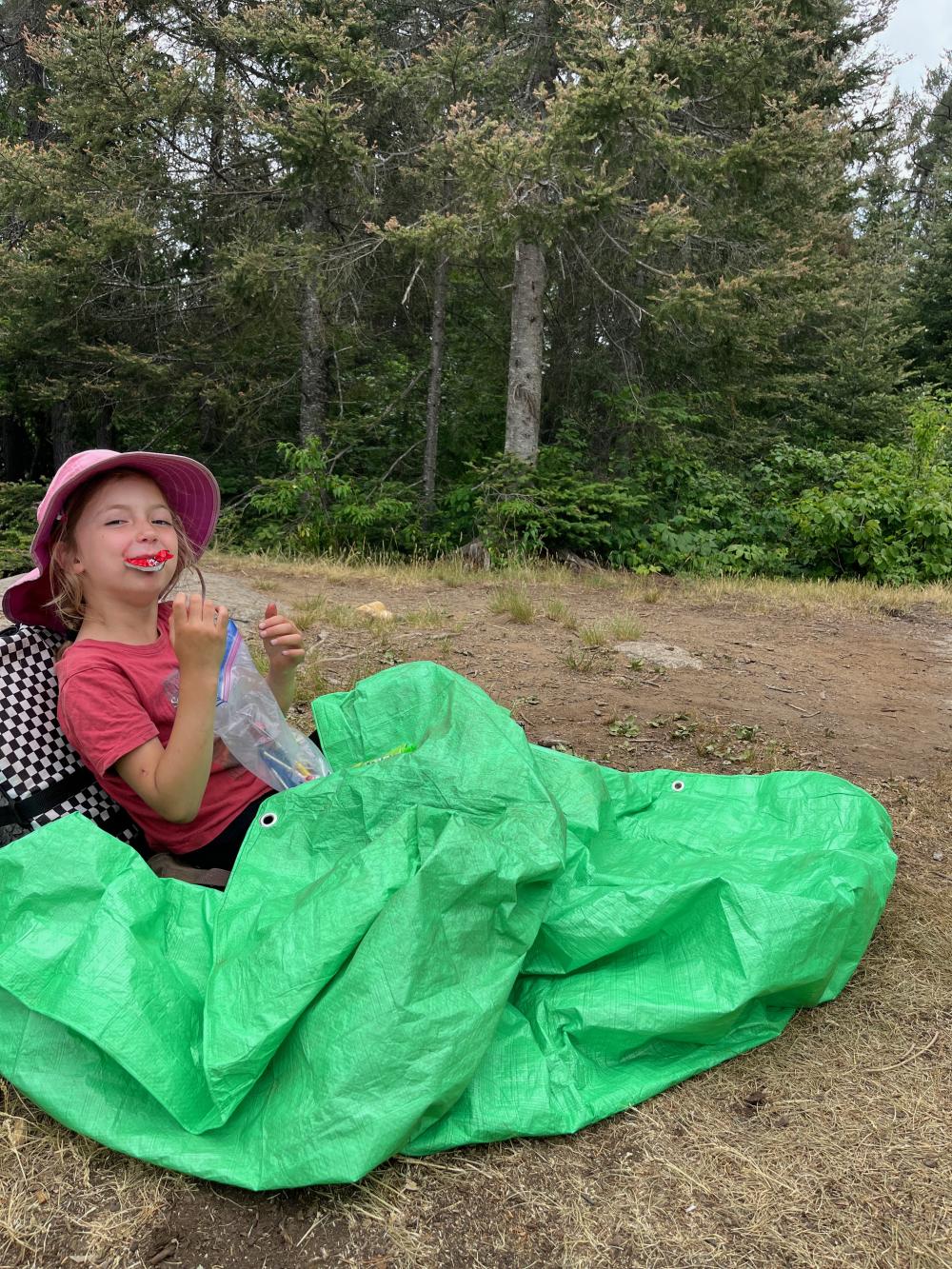
- What is the Boundary Waters?
- Mining Threat
- Resource Library
- Ways to Give
- Mission & Impact
- Business Coalition
- Ely Headquarters
- Login
- Sign Up!
- Messageboard
Social Login
- Login with Facebook
- Login with Twitter
Forgot your password? Don't have an account yet? Sign up
Boundary Waters Trip Planning Info
Basic Rules & Information
BWCA Permit & Information
Checklist & Trip Planning
Gear Rental & Outfitters
Resorts, Cabins & Camping

- Boundary Waters Canoe Area
- Follow
- Messageboard

Community Links
Featured Sponsor

Popular topics
- Why the new food storage order frustrates older campers
- Missing canoer
- Food storage order
- Do you still use maps in the BWCA?
- Sticky tent floor fix?
Recent Trip Reports
- First trip ever as a solo at 21 yo
- Early Laker Fly Fishing
- Solo on Lakes 1-3 before fishing season
- Smith State Park & Three Nights in Okefenokee
- Big Fork River - Dora Lake to Little American Falls
Help keep support this community and website with the many resources it provides and maintains. Learn more
We use cookies to enhance your experience, for analytics, and to support 3rd party content and advertising providers. If you continue using this website, you agree to our privacy and legal agreement . Ok
Prove It First: Commonsense Protection For The Boundary Waters & Lake Superior. Take Action

Need to brush up on knots? Wondering how to plan your menu or how to travel with kids? From bear safety to hygiene, we have the resources to help you get the most out of your Boundary Waters experience.
What to Bring
- Download a packing List
- How to Pack for a Canoe Trip
- Budget Guide to the BWCA!
- Electronics in the Wilderness
- BWCA Route Finder
- Step-by-Step Planning Guide
- Permits and Entry Points
- Guide to the Quetico
- Hiking the BWCA
Cooking at Camp
- Basics of Wilderness Cooking
- 5 ideas and recipes for Breakfast
- 5 ideas and recipes for Lunch
- 7 ideas and recipes for Dinner
Safety Tips
- Bear Safety
- 8 Safety Concerns
- Wilderness First Aid
Wilderness Skills
- How-To-Videos
- 5 Essential Knots
- How to Portage and Paddle
Important Travel Tips
- Traveling with Kids
- Menstrual Hygiene
- Leave No Trace & Wilderness Ethics
- Superior National Forest
Fishing and Photography
- Wilderness Fishing in the Boundary Waters
- Tips for Finding Fish in the BWCA
- 5 Essential Fishing Lures in the BWCA
- Essential Camera Equipment
Learn about Outfitters
Friends’ Guide to the Boundary Waters

IMAGES
VIDEO
COMMENTS
Here are a few tips that I recommend for any BWCA camper. • Don't forget your toothbrush! • For God's sake, bring a head net to keep bugs away. • You aren't going to read that novel; leave ...
1) The Vento Unit accessed from the east side of the Gunflint Trail and the end of the Arrowhead Trail in Hovland. 2) The largest "main" section of the Boundary Waters that stretches from Gunflint Lake all the way to Ely and Crane Lake. 3) The La Croix unit in between Burntside and Vermillion Lakes.
If you're a Minnesota resident, an annual fishing license is $25 or $14 for 72 hours. If you're a non-resident, it's $51 annually, $43 for 7 days, or $36 for 72 hours. The reservation system for Boundary Waters permits opens up at 9 a.m. CT on the last Wednesday of January every year on the BWCA recreation.gov website.
9. Clean camp, clean conscience. Keep things tidy around camp. Pack things up, store them in the vestibule, under the canoe or in a pack. This will greatly reduce the chances of losing anything and leaving behind a mess for the next group to clean up. 10.
Best Boundary Waters 4-day trips Lac La Croix. Make a run for the border on this 28-mile, out-and-back route starting at entry point 16. Sprawling Lac La Croix is stunning with its fleet of islands, and along the way you'll touch on the more intimate surroundings of Nina Moose Lake and Lake Agnes.
About the Boundary Waters Canoe Area (BWCA) Minnesota and Quetico. Tips On BWCA Canoe Trip Routes. Your trip through the wilderness will only be as good — or as bad — as the route you travel. There is no one route that is best, and there is no one entry point that is best. BWCA Routes can change a great deal over the course of a summer.
Accessible primarily by canoe, the Boundary Waters in northern Minnesota is one of America's most beautiful and remote adventures. Plan your first trip using this four-day beginner-friendly itinerary. One of the hardest things about planning your first Boundary Waters trip is deciding where to go within the vast preserve's 1,200 miles of canoe routes, 11 hiking trails and approximately 2,000 ...
of Trip to Take. There are many ways to explore the Boundary Waters, but the two most popular modes of travel are hiking and canoeing. Canoeing. Northeastern Minnesota is created for canoeing. This is the best canoe country in the United States, a place where each year thousands of lives are transformed. Hiking.
While most BWCA visitors are experienced, every year first-timers travel there — some prepared, many others not so much. Newcomers sometimes are conspicuous by the armfuls of gear, often stuffed in black plastic garbage bags, they lug across portages. Or by their bluejeans — slow-drying cotton scorned by most Boundary Waters paddlers.
Cover a greater distance with only three short portages and explore two large lakes and one small lake. Put in your boat at the boat launch near the Sawbill Campground. Paddle a short way up Sawbill Lake to Kelso River. Take the 18.5-rod portage between Sawbill Lake and Kelso River.
60 days before your trip, you should: Decide on a menu and split up food-buying duties. Make one person responsible for buying all the breakfast food, another for lunch, and a third for dinner. Make reservations for any gear you might need with the outfitter of your choice.
Read on for how to plan an amazing trip, find an outfitter, determine the best entry point and get a permit, what to pack (and what to leave behind), and more for your trip to the Boundary Waters Canoe Area. 1. Working with Tuscarora Outfitters. An outfitter can make your experience in the Boundary Waters Canoe Area stress-free, whether you ...
The first step in planning your Boundary Waters adventure is to determine how long you want to be in the wilderness. Trips range from a few days to several weeks, so consider your skill level, the distance you want to travel, and the amount of time you can take off from your other commitments. Pick your Dates.
for BWCA and Quetico Park Canoe Trips. Our primary service is to help you choose an entry and plan a route. We do this based on party make-up, previous experience desire for solitude, trip interests, and length of trip. Please phone us to discuss trip ideas. Entry points should be thought of as the small end of a funnel.
We're experts at the trip planning process, and we're happy to help! Reach us with our online contact form, at [email protected], or by phone at 218-343-7951. Answers to frequently asked questions, tips and suggestions for planning a successful Boundary Waters (BWCAW) canoe trip from the experts Ely Outfitting Company.
Breaking news, in-depth stories, tips for wilderness travel, and insights into America's most popular Wilderness Area. All Articles. ... Chip in to Protect the Boundary Waters. You are the future of the wilderness and of clean water. Donate. 2550 University Ave. W. Suite 180 S St. Paul, MN 55114.
Also, along the same lines, we plan our trips with alternating work/rest days. We'll work really hard on day 1, then stay at the same site and hang out on day 2. Work hard on day 3, then rest on day 4. Rinse and repeat. We find that we can push the kids further on the work days and get deeper into the wilderness.
Tips For Better Boundary Waters Canoe Portaging. Boundary Waters portaging, that act of carrying your canoe and cargo over a trail connecting two lakes, brings fear into the hearts of Canoe Country newbies and pros alike. The fact of the matter is that portaging a canoe and gear is an intricate part of a Boundary Waters canoe trip.
BWCA.com is a great resource to aid in your planning and enjoyment of the Boundary Waters Canoe Area Wilderness(BWCA) and Quetico Park. Login; Sign Up! Messageboard; Contact Us; Social Login. Login with Facebook ... Boundary Waters Quetico Forum Trip Planning Forum Forum Sponsor. Post New Message. 0 new message(s) Last Visit: 05/17/2024 09:12PM
Trip Resources. Legal and Scientific Resources. Podcast. Chip in to Protect the Boundary Waters. You are the future of the wilderness and of clean water. Donate. 2550 University Ave. W.Suite 180 SSt. Paul, MN 55114. [email protected]. Ely Office8 E. Sheridan St.Ely, MN 55731.
Following the spawn, females go deep, and males are easier to catch as they will hit on lures often repeatedly. Best BWCA fishing tips for smallmouth bass after the spawn is to use crank baits, surface lures, Mepps spinner baits and other spinners, jigs and live bait. Using leeches on your BWCA fishing trip is a good idea as they are a more ...
Trip Resources. Legal and Scientific Resources. Podcast. Chip in to Protect the Boundary Waters. You are the future of the wilderness and of clean water. Donate. 2550 University Ave. W.Suite 180 SSt. Paul, MN 55114. [email protected]. Ely Office8 E. Sheridan St.Ely, MN 55731.